Philip Sandifer's Blog, page 6
August 4, 2020
Leave It Open

The first song to have a demo completed for The Dreaming (“Sat In Your Lap” was initially released as a standalone single), “Leave It Open” introduces much of the album’s ambition and cadences. Another treatise on the nature of thought and repression, Bush develops and inverts her previous metaphysical ideas about the world, presenting it as a frightening and hostile sphere yet treating interaction with it as an inevitability, and even a relationship where a person’s interiority can have input. As the refrain stipulates with a degree of bellicosity, “harm is in us, but power to arm.” In “Leave It Open,” Bush creates an ethos of wondrous fear, where allowing the self to become a vessel for something Other is an act of submissive reclamation of human potential.
Let’s start counterintuitively (in the spirit of The Dreaming) with the coda of “Leave It Open”, which sees Bush proffering a rare, aphoristic thesis statement in the form of a repetitive double-backmasked chant: “we let the weirdness in.” Amusingly, upon release this was Bush’s most controversial coda, with listeners calling into Bush’s television and radio interviews attempting to guess what distorted words Bush is singing (“we paint the penguins pink” is the best one). “We let the weirdness in” sounds unlikely — it’s disjointed, with abstractions and syntactic ambiguity. As my friend Rohanne points out on the brilliant Kate Bush podcast Strange Phenomena, The Dreaming sees Bush shifting from writing character narratives to reorienting her songwriting around concepts and abstractions. What is “the weirdness?” And how are we letting it in? “Leave It Open” concludes on a note of imprecision and unknowability. But the song also begins there — the verses and refrains are similarly disjointed in their grammar: “with my ego in my gut/my babbling mouth would wash it up.” The clauses are unclear in their relationship to their object and subject, phrasing abstractions in a way that suggests they’re corporeal stimuli. “Wide eyes would clean and dust/things that decay, things that rust” suggests bodily fluidity. The aversion to coherent speech and language is almost Burroughsian: language is a virus, and can only be allowed through in a broken, primal form, taking after a rhythm track. The Dreaming’s incipient nucleus of uncertainty creeps forth.
Moreso than “Sat In Your Lap,” “Leave It Open” emphasizes a theme that pervades The Dreaming in its exploration of madness as a feminist liberation. It sees Bush unharnessing herself from the tyranny of rational thought and conventional speech in favor of “letting the weirdness in.” An infusion takes place, with the song mostly looking at forms of opening and closing (“my door was never locked/until one day a trigger come cocking”). “Leave It Open” describes physically allowing unknowable things into one’s mind and body. Bush’s vocals are an entourage of different voices, with her lead vocal a tremulous inhalation (“watched it weeping/but I made it stay”), and her B.V.’s a series of childlike, high-soprano shouts (“but now I’ve started learning how!”). She uses extreme parts of her vocal range, the muscular and traditionally masculine “deep” end, and the (allegedly) feminine voice she’s often caricatured as having. There’s no single, definitive “Kate Bush voice” at work in this, nor a traditional idea of how women in pop music are supposed to sound. As Bushologist Deborah Withers writes, “becoming is an empathetic, expansive act and pivots on issues of receptivity and interconnectivity.” In the verses, Bush sounds afraid to breathe. “With my ego in my gut” even suggests the holding of breath (quite a departure from two songs ago), as the first verse describes a fear of unleashing one’s psyche on the world: “my door was never locked,” “wide eyes would clean and dust,” a series of declarations each ending in “I keep it… shut.” You can’t harm me, she says. I’m not saying a word.
“Leave It Open” flaunts its abnormality, from its weird syntax to its mix mostly consisting of heavily processed vocals, a booming rhythm section, and a rather agonized guitar part even by Alan Murphy’s standards. Once again, it’s built around its primal 4/4 drumbeat (somewhat reminiscent of Queen’s “We Will Rock You”), mostly locked into Preston Heyman’s shells. Bush’s vocal clearly tracks it, as her emphasis continually meets the downbeat (“WITH my ego IN my gut…”). Even the piano is a percussive instrument here, offering stabbed chords mostly to accentuate the drums, sticking to a narrow and mostly conventional chord progression in G minor, i-V-IV-VI (although it’s not without Bush’s chromatic flare — she plays D and C, the respective V and IV degrees of G melodic minor, and end the progression on Eb, the VI of G natural and harmonic minor).
The results are both claustrophobic and resounding, hemming itself in to create an atmosphere of confrontational release. A purging happens: rather than knowledge being something that you never have, Bush allows it to seep in on its own time, declaring throughout the second verse “I leave it open.” The body becomes a kind of tap for outside forces and radical change, letting them through with patience and silence. Queer people might relate to “Leave It Open’s” description of keeping the closet shut, and letting the exponential strangeness of their minds and the world harmonize. At once, the body stops tensing and so does the mind, letting the unknown pour through (“narrow mind would persecute it/die a little to get through it”). Despite being more intense and discordant than “Sat In Your Lap,” “Leave It Open” is weirdly anthemic and optimistic: allowing the weirdness is a way to discover new ways of being. Rigidity gives way to tranquility. Maybe the weirdness is the crack in everything, as Leonard Cohen once said. It’s how the light gets in.
Bodily inertia has been a focal point of these last few songs — even “Army Dreamers” is about death and loss. Specifically, bodies become inert as a form of self-defense. “Leave It Open” offers an alternative: perhaps it’s OK to let the body rest and allow outside forces through; “I kept it in a cage/watched it weeping/but I made it stay,” as if the body is a vessel for the mind and the things external to it. Bush touched on this idea in a newsletter at the time, writing “like cups [what is it with The Dreaming and cups?], we are filled up with feelings, emotions — breathing in, breathing out. The song is about being open and shut to stimuli at the right times. Often times we have closed minds and open mouths when we should have open minds and shut mouths.” One wonders if Bush has ever encountered meditation or contemplative spiritual practices, as this is pretty much the same premise. It’s also the crux of dissociation, the psychological reaction where the brain shuts down to protect itself from triggers. There’s a reason the brain is both able to shut down and be alert — varying defense mechanisms react to different stimuli.
Bush is far from alone in her treatment of women’s creativity as a psychological flood. The 1970s had been populated by such literature, including French feminist writer Hélène Cixous’ classic 1975 essay “The Laugh of the Medusa.” In the essay, functionally an artistic feminist manifesto, Cixous expounds on the trauma inherent in women’s subdued role in patriarchal history, calling for women to “put [themselves] into the text — as into the world and into history — by her own movement.” She frames writing as a radical act that gets performed in private (not dissimilar to the crux of Virginia Woolf’s A Room of One’s Own), serving as a reclamation of history and a subversion of the Western canon, treating the true capabilities of women as “luminous torrents,” and at once point shockingly paralleling “Sat In Your Lap” with the declaration “I too, overflow.” Most striking is the way “The Laugh of the Medusa” frames women’s liberation as a way of dealing with trauma; that unleashing one’s self into the world is the way to combat misogynistic suppression. History is made of women’s silence and private lives, she argues: “A world of searching, the elaboration of a knowledge, on the basis of a systematic experimentation with the bodily functions, a passionate and precise interrogation of [one’s] erogeneity.” Most tellingly, she observes that women have been made to think of their own femininity as monstrous and fight it in the finite but immense arena of the mind.
The self-proclaimed non-feminist Kate Bush taps into this idea aptly. She may not think her ideas are feminist (and indeed, they often aren’t), but the number of liberationist feminist missives she inadvertently pens over the years are countless. As Cixous declares “we have been turned away from our bodies,” Bush turns the body inside out. She suggests a new mode of being, allowing whatever may come into one’s presence to fill a person up. It’s not quite an act of expulsion, but nonetheless “Leave It Open” prescribes a sort of bodily tranquility, allowing one’s body to welcome the world and quit shutting it out. Perhaps this exposure to the Other will allow us to unleash ourselves on the world more fully. Trauma and queerness will not be silent. They will rend the ether. We’ll let the weirdness in, but afterwards the weirdness is going to need serious therapy.
Backing tracks laid down at Townhouse Studios, Shepherd’s Bush, London in May ’81. Overdubs recorded at Odyssey Studios, London in August ’81, and at Advision Studios, Fitzrovia, London from January through March ’81. Mixed at Advision from March through May ’81. Released on The Dreaming on 13 September ’82. Personnel: Kate Bush — vocals, piano, Fairlight. Preston Heyman — drums. Jimmy Bain — bass. Alan Murphy — electric guitar. Ian Bairnson — acoustic guitar. Hugh Padgham — engineering. Image: Sheryl Lee as the late Laura Palmer experiencing a beatific (?) vision in Twin Peaks: Fire Walk With Me (1992, dir. David Lynch/D.O.P. Ron Garcia.)
August 1, 2020
TARDIS Eruditorum Volume 8 Kickstarter
 At long and wearied last, it's time for the Kickstarter for TARDIS Eruditorum Volume 8, covering the Paul McGann and Christopher Eccleston eras of the series. The Kickstarter is over here waiting to accept your money. The base goal is a somewhat higher than before $5000, largely because I've learned my lesson about shipping physical rewards. Also, there's a lot fewer physical rewards. But all of this is technical shop talk, and this should be about publicity, so let me change hats and be a proper hype woman for myself.
At long and wearied last, it's time for the Kickstarter for TARDIS Eruditorum Volume 8, covering the Paul McGann and Christopher Eccleston eras of the series. The Kickstarter is over here waiting to accept your money. The base goal is a somewhat higher than before $5000, largely because I've learned my lesson about shipping physical rewards. Also, there's a lot fewer physical rewards. But all of this is technical shop talk, and this should be about publicity, so let me change hats and be a proper hype woman for myself.
This book will cover the two attempts to bring Doctor Who back—the ultimately disastrous US revival in 1996, and the massively successful UK one in 2005. It begins with a lot of hope and ends with a lot of hope, and everything in the middle is one of the most gloriously tangled messes in the history of the series, comprising multiple irreconciliable timelines, feuding lines, and a lot of very, very daft shit. If Volume 7 is a story about how to get cancelled and still be a triumph, Volume 8 is a story about how to score an absolutely massive and medium-changing hit television show despite doing literally everything wrong for nearly a decade.
And yet in that tangled web of errors there's so much that's fascinating. Works by Kate Orman, Jon Blum, Paul Magrs, Lloyd Rose, and Lawrence Miles abound. Paul McGann's consistently deft performance that somehow works even when he's sleepwalking through some of the most dire scripts Big Finish has ever written. And just a staggering amount of stuff that is so brain-meltingly weird that you wonder how on Earth anybody thought this was what you should do with Doctor Who.
As it stands, the book should include almost all of the blog posts from the McGann and Eccleston eras. (As with McCoy, there's a few that were frankly filler to deal with the fact that three novels a week was an unsustainable pace, and I'm likely to cut those.) And then, with stretch goals, there are several more. The stretch goals are roughly organized in phases, proceeding thusly.
Through $7000, they add the Now My Doctor essays that sum up the respective eras of the television show. No Eruditorum Kickstarter has ever failed to hit this sort of tier, and I can't imagine it's going to be a problem this time. It'd be bizarre not to have these.
Starting at $8000 are a triptych of essays about the War Doctor era. Due to my continuing refusal to write new essays on Big Finish material, these will consist of a Day of the Doctor essay (almost certainly working in the novel this time), an essay on the book Engines of War, and a Now My Doctor essay. (Might I slip in an essay on the Eleventh Doctor comics run dealing with the War Doctor? No active plans to, but you never know.)
At $11,000, we get to the canon essays. These are big and fun. How Many Time Wars Were There? Does the Eighth Doctor have a Chronology? So Was He Half Human? All of these questions will be delved into with thoroughness and a love of knocking over tables and making a mess. These are consistently some of my favorite essays to write in the books, and I'm really hoping we get all three.
$14,000 is an odd duck—a Pop Between Realities essay on Spiceworld, the Spice Girls film, and more broadly on New Labour. This is a bit of scene setting I missed doing the blog, and it really needs unpacking, so I'm hoping we can get this in there.
And finaly, at $15k and $16k, a pair of novels I'd like to add in: Lloyd Rose's acclaimed City of the Dead, and the Faction Paradox classic Book of the War.
All of these, I think, are fun essays that I actually want to write. So hopefully we'll plow through a good chunk of stretch goals and get to fill out the book with all sorts of goodies.
This was a weird era to write about, but it has some of my favorite writing in Eruditorum, especially the Eccleston season, which has multiple mad, gonzo essays, including two that are going to be glorious nightmares to try to format for print. I am thoroughly excited to clean them up and get them into an Official Version, and to finally bring the TARDIS Eruditorum books into the new series.
So if this is something you want to read, and if you want to financially support my work, I implore you to go back the Kickstarter. Once again, the link is right here. Thank you, as ever, for your support.
July 31, 2020
IDSG Ep60 - Bret Weinstein and Heather Heying
This week, Daniel and Jack discuss Bret Weinstein and Heather Heying, two alumni of the Intellectual Dark Web, their 'origin story' as 'public intellectuals' in the Evergreen College kerfuffle of 2017, and their current views on Black Lives Matter and Trans Rights as expressed in their Dark Horse podcast. Jack gets angry and giggly.
Next week, we will move on to Bret's brother Eric Weinstein.
Content Warning.
Permalink / Direct Download / Soundcloud
Bari Weiss, "Meet the Renegades of the Intellectual Dark Web." https://www.nytimes.com/2018/05/08/opinion/intellectual-dark-web.html
Bret Weinstein homepage: https://bretweinstein.net/
Heather Heying homepage: https://heatherheying.com/
Evergreen State College at Wikipedia. https://en.wikipedia.org/wiki/Evergreen_State_College
Programs and Courses at Evergreen. https://www.evergreen.edu/academics/programs
Bret Weinstein Explains the Day of Absence on Joe Rogan: https://www.youtube.com/watch?v=-st73zhZL3A
Bret Weinstein on Tucker Carlson, May 26 2020. https://www.youtube.com/watch?v=_j9nFced_eo
Jacqueline Littleton, "The Truth About the Evergreen Protests." https://medium.com/@princessofthefaeries666/the-truth-about-the-evergreen-protests-444c86ee6307
Noah Berlatsky, "The Real Free Speech Story at Evergreen College." https://psmag.com/education/the-real-free-speech-story-at-evergreen-college
"Another Side of the Evergreen State College Story." https://www.huffpost.com/entry/evergreen-state-college-another-side_b_598cd293e4b090964295e8fc?guccounter=1&guce_referrer=aHR0cHM6Ly93d3cuZ29vZ2xlLmNvbS8&guce_referrer_sig=AQAAAEpQrgKs2MwkdM5iym8soDVnkkpQYbq3YKgw6fp62JA2xw_v_vSfS_O1EkcMNbbaM_leOCssfRJspZ8CiodkDerxlEWdw5vx3Vdmoe-2UFbmTkYSkhEMWWDMBaa_48LFSb6BMWtFz2X1xbCSS51b_fYIFe27hfLdLeFCj232fAlS
Nancy Koppelman, "Bret Weinstein's Second Act." https://medium.com/@nancykoppelman/bret-weinsteins-second-act-from-liberal-arts-professor-to-public-intellectual-88471fdb2518
"The Intellectual Dark Web Goes to Washington." https://theoutline.com/post/4717/the-intellectual-dark-web-goes-to-washington?zd=1&zi=ft4wuqma
The Dark Horse Podcast: https://www.youtube.com/channel/UCi5N_uAqApEUIlg32QzkPlg
"Overlooked No More: Valerie Solanas, Radical Feminist Who Shot Andy Warhol." https://www.nytimes.com/2020/06/26/obituaries/valerie-solanas-overlooked.html
William Simon U'Ren Wikipedia: https://en.wikipedia.org/wiki/William_Simon_U%27Ren
William Simon U'Ren Plaque in Oregon City: https://en.wikipedia.org/wiki/William_Simon_U%27Ren
Mariame Kaba, "Yes We Mean Literally Abolish the Police." https://www.nytimes.com/2020/06/12/opinion/sunday/floyd-abolish-defund-police.html
For fun:
Majority Report, 19th July 2020, ‘Weinstein Bro Politely Calls Dave Rubin a Paid Shill’: https://www.youtube.com/watch?v=f4uSlbqSXVA
Potholer54, ‘Did Covid-19 Start in a Chinese Lab?’: https://www.youtube.com/watch?v=ab-r0capbzk
July 27, 2020
Sat In Your Lap
We did it. I hit $300 on the Patreon because of your support. Thank you so much to everyone who pledged (all 98 of you), 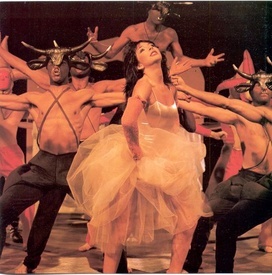 shared the link, contributed to reaching the goals, or was just kind and supportive. This is quite literally life-changing for me. I can making a living off my passion without having to compromise financial security or my mental health. You people are amazing and I am indebted to you all. To be clear, $300 is a minimum though. I'm a disabled trans woman, and people will inevitably drop their pledges. Continued support would be great. But in the meantime, thank you. My life is better for your support.
shared the link, contributed to reaching the goals, or was just kind and supportive. This is quite literally life-changing for me. I can making a living off my passion without having to compromise financial security or my mental health. You people are amazing and I am indebted to you all. To be clear, $300 is a minimum though. I'm a disabled trans woman, and people will inevitably drop their pledges. Continued support would be great. But in the meantime, thank you. My life is better for your support.
Demo
Sat In Your Lap (single)
Sat In Your Lap (LP version)
MV
Dance rehearsal (fragment, Looking Good Feeling Fit)
The aftermath of Never for Ever was a period of burnout for Bush. Prone to depressive burnouts after the completion of projects, she found herself drifting into a nadir of fruitless ennui, which she deemed “the anti-climax after all the work.” Completing Never for Ever in May 1980, Bush, not for the last time, put significant space between herself and the public, taking a holiday after an exhausting several months of recording. By the time Never for Ever was released in September, Bush was only just recovering from her creative inertia. Her timing was auspicious, as Never for Ever not only became her first #1 LP in the UK but the country’s first ever #1 studio album by a female solo artist ever. Never for Ever’s success was accompanied by heaps of promotion by Bush, including the usual run of performing songs on talk shows as well as signing albums for hundreds of fans at a time. Now she had more creative agency than she had previously, touting Never for Ever as “the first [album] [she] could hand to people with a smile.” Kate Bush the prodigy who sang “Wuthering Heights” was already a distant memory, transforming into Kate Bush the great 1980s British songwriter.
Yet Bush’s listlessness and struggle to write songs persisted for some time. It’s not hard to see why — the stress of Never for Ever’s production and the attention of the British public would be enough to put a damper on anyone’s creative output. It took seeing other musicians at work to get her motivated again. In September, Bush and her boyfriend Del Palmer attended a Stevie Wonder concert at Wembley Arena. Wonder was in a period of creative renewal himself. Having recently turned out a rare Motown flop in the distinctively titled Journey Through “the Secret Life of Plants”, he’d rebuilt confidence with his delightful Hotter than July LP. The concert broke Bush out of her writer’s block — “inspired by the feeling of his music,” as she later wrote, Bush got back to work on her songs, and forged a path towards her next album.
Bush’s work to date was largely harmonic, built around what notes went together interestingly on the piano. Rhythm was secondary for her: it’s hard to think of a rhythmically powerful song on Bush’s first three albums. Her preparations for Kate Bush IV had thus far consisted of little bits of melody, but without a focal center. After the Wonder concert, she realized she needed to start her songwriting from the rhythm track upwards. At home, she programmed a rhythm into her Roland drum machine (according to my friend Marlo, the Roland on her demo from the period sounds like a CR-78, and woe to anyone who disagrees with Marlo on drum machines), and “worked in [a] piano riff to the hi-hat and snare.” A demo resulted: “Sat In Your Lap,” Kate Bush’s first solo production, was in its nascency.
“Sat In Your Lap” wasn’t always Bush’s first self-produced song. For a time, she entertained bringing in experienced producers, including long-standing David Bowie collaborator Tony Visconti, going so far as to spend a day in the studio with him. The collaboration went nowhere, and Visconti has grossly remarked “all I can remember is the Bush bum.” Perhaps unsurprisingly, Bush decided to take on the producer role herself, with the intensive collaboration of a series of engineers. The first set of sessions for the album that would be The Dreaming were staged at Townhouse Studios in May 1981. Her collaborating engineer was Hugh Padgham, a producer for Phil Collins and XTC known for the “gated drum” sound that would define 80s pop (compress the drums, use a recording console’s “gate” to remove their reverb, resulting in a kind of sound vacuum. See Phil Collins’ “In the Air Tonight”). Bush and Padgham’s time in Townhouse was productive yet short-lived. Padgham is rare among Bush collaborators in having negative feelings about working with her, grumbling about her tendency to overpack a mix and experiment rather than having a concrete, straightforward vision. After laying backing tracks for three songs, Padgham moved on, dissatisfied with his latest gig but having indelibly marked the sound of The Dreaming.
Bush’s ad-libs, piano riffs, and rhythm track came together quickly in the studio, quicker than any other song on The Dreaming. Having a drum-centric engineer like Padgham was incredibly useful for her, as the early recording of Bush’s rhythm track showed. “Sat In Your Lap” is heavily percussive, built around its drum sound and brass section (initially synthesized on a Yamaha CS-80). The partially syncopated drumbeat (“dum-DUM-dum-DUM”) is Preston Heyman’s most memorable to date, a fine translation of the demo. The frantic, almost pharyngeal rhythm track has a kick drum so guttural and suppressed (though not apparently gated) that it can easily be mistaken for one of Bush’s vocal onomatopoeias. The track’s sonic menagerie (Bush’s recurring motif of musical instruments as bodily extensions lives to a maniacal extent), a veritable ensemble of screams, tinny horns on the Fairlight CMI, swishing bamboo sticks (thanks to Paddy Bush and Preston Heyman) childlike whispers, “HO-HO-HO’s,” and bellows of “JUST when I think I’m king!”
What better to bring Bush out of a period of creative stagnation than a missive to psychological stagnation? Or even better, a tremendously loud, busy, and clamorous one. Amidst the song’s sheer volume is a narrative of inertia and stillness. Bush deploys a childlike whisper in the verses, a canny juxtaposition with the rhythm track’s masculine percussiveness, indicating juvenile trepidation as she watches adults go about their lives: “I see the people working/I see it working for them/and so I want to join them/but then I find it hurts me.” The verses are terse observations from an unmoving figure, grounded in a desire to catch up and have a powerful mind: “I see the people happy/so can it happen for me?,” “I want to be a lawyer/I want to be a scholar/but I really can’t be bothered,” “I want the answers quickly/but I don’t have no energy.”
The verses are similarly sclerotic, sticking to its home key and mode of Ab Dorian closely, with an incessant chord progression of i-VII (Abm7-Gb), a relatively conservative doublet of chords that seem paranoid about wandering away from the key’s tonic (limiting a verse to its key’s tonic and subtonic is uncharacteristically parsimonious for Bush), and even staying in 3/4 the whole time. The refrain sees a return to Bush’s harmonic and rhythmic weirdness. Her predilection for following up a key’s tonic chord with the tonic of the parallel key lives as ever, as she maneuvers from Ab minor’s IV chord (Db) to Ab major’s iv (Db minor). The refrain otherwise sticks to a fairly conventional Ab minor (IV-iv-i-IV), with a smattering of Bushian time signature changes (it mostly sticks to 4/4, with a bar in 2/4 at the tail end of “some say that knowledge is something sat/in your lap” and “ho, ho, ho”). The post-chorus breaks with Ab Dorian, modulating to Db Mixolydian (a major key alternative to Dorian mode) with “JUST when I think I’m KING!”, dallying with chords not present in the key (A) and owning its unified disjointedness.
“Sat In Your Lap” conveys both frantic motivation and fearful inaction — it is enticed by the busy and productive activities of people and intimidated by the energy exerted in them, perhaps suggesting a character outwardly compelled to be a productive adult too soon (it’s possible Bush could relate). It is at once rapid, careening at 146 BPM, and petrified with fear. The music video (Bush’s first without director Keef Macmillan) swerves between stillness and freneticism. During the verses, Bush is mostly seated in a white dress, while the refrains see her cavorting with dancers in dunce caps. Former “gifted and talented” children drained by adults’ external compulsion to excel may encounter a kindred spirit in “Sat In Your Lap.” Yet even in its inertia lays a search — despite the emotional shutting down, the desperate need for knowledge and truth is genuine and constant.
The incessant refrain, consisting of Bush screaming (with occasional variations) “some say that knowledge is something sat in your lap/some say that knowledge is something that you never have,” makes the preoccupation with knowledge clear. Holy shit, says Bush, look at all this cool stuff adults do! And all these neat religious and philosophical paths! “Some say that heaven is hell/some say that hell is heaven!” Is anyone right? The sheer quantity of faiths can be incredibly disorienting to an adult. The comparable power that spirituality can have over a child is often formative.
Spirituality often works at a snail’s pace. Things that become deeply engrained in a young believer’s mind at an early age will only become clear to them several years later. A child confronted with gods can have a variety of emotional responses: indifference, awe, fear, befuddlement, joy. Sometimes a child is deeply moved by what they witness and feel. Yet with that, there can be complete physical inertia — shock and over-saturation, or interior silence and contemplation. For instance, the Hebrew Bible’s prophet Ezekiel responds to his first apocalyptic vision by sinking into days of catatonia. Bush’s answer to the mind-body problem is a symbiotic one — it’s an ouroboros, with no strict origin point, the body and the mind depending on one another. Once “Sat In Your Lap” taps into this idea of
Complicating this is the partial secularity of the song’s search. Her questions aren’t any less spiritual for it — some of the most spiritually complex people I’ve ever met are confirmed atheists, and Kate “I don’t think I’ve really found a niche” Bush hardly seems like a Bertrand Russell-esque non-believer. Ever the aesthete, Bush claims that she’s primarily drawn to the iconography of faith: “such powerful, beautiful, passionate images!” as she said of her Roman Catholic upbringing. Her first ever published writing was a poem about the Crucifixion. In a 1979 interview, she prodded a possible belief in a God, opining that God was “a label for people to put all their belief and love into,” and that putting such emotional effort into one’s relationships with people causes one to “reach an aim.” For all the theological crudeness of this idea (it boils down to little more than a hippie’s plea for everyone to just get along), Bush is (characteristically) unintentionally right. There’s a deep emotional center to faith and prayer. Contemplative and meditative traditions are built on unifying one’s emotional state with spirituality. This doesn’t make the experiences any less real — feelings are facts of life. An empirical understanding of any societal phenomena has to grasp its emotional basis: the values and emotions it appeals to.
Another animating tension of “Sat in Your Lap” is its emotional fluidity while nominally discussing knowledge: “some say that knowledge is something sat in your lap,” or knowledge is “something that you never have.” These are largely apophatic definitions of knowledge, defining it as an elusive force. The rampant emotiveness pervades a search for knowledge. “In my dome of ivory/a home of activity/I want the answers quickly/but I don’t have no energy” sees a desire for knowledge colliding with aporia and sensory overload. Without a clear path forward, sometimes the only trajectory is acceleration and exhaustion.
As the only answer to the unanswerable is sublime incoherence, the song’s coda is hermetic descent into sensory overload. Iconography blurs (“Tibet or Jeddah,” “to Salisbury/a monastery”) in a tendency that’s strong in the last couple verses, as Bush inverts Psalm 23 (“my cup, she never overfloweth”), dabbles in desert-dwelling, monasticism, cathedrals, and with “some grey and white matter,” the human brain (grey and white matter oversee the brain’s connection to the spinal cord). “Sat in Your Lap” concludes with inconclusiveness: its dance is in the terrifying glory of befuddlement. Asceticism is a cerebral process as well as physical: the brain responds to the body’s state. Bush is engaging with some genuinely fascinating systems of thought here: for all the approaches to the mind/body problem that have been formulated, responding to it with “isn’t scholastically-caused sensory overload a kind of asceticism?” is new.
Recorded at Townhouse Studio 2, Shepherd’s Bush in May 1981; mixed through June. Issued as a single 21 June 1981; released again as the opening track of The Dreaming on 13 September 1982, over a year later. Music video also released in July ’81. Like every other song on the album, never performed live. Kate Bush — vocals, piano, CMI, production. Hugh Padgham — engineer. Nick Launay — engineer (mixing). Preston Heyman — drums, bamboo sticks. Jimmy Bain — bass. Paddy Bush — backing vocals, bamboo sticks. Ian Bairnson — backing vocals. Gary Hurst — backing vocals. Stewart Avon-Arnold — backing vocals. Geoff Downes — CMI trumpets. Photo: Kindlight.
July 23, 2020
Of Human Bondage Ep. 1: Dr. No & Patreon Update
Hi all! I want to start this post with a quick update regarding the Patreon. The outpouring of support from friends and readers 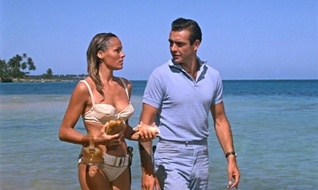 has been truly astounding. I cannot describe the thrill of waking up yesterday and realizing I would soon be able to live off my writing. The support of my community, the chance to fully dedicate myself to my craft, and not having to resort to a re-traumatizing job in order to survive makes for a tremendous feeling of support and gratitude. I cannot thank you all enough. You are amazing and have literally, materially changed my life.
has been truly astounding. I cannot describe the thrill of waking up yesterday and realizing I would soon be able to live off my writing. The support of my community, the chance to fully dedicate myself to my craft, and not having to resort to a re-traumatizing job in order to survive makes for a tremendous feeling of support and gratitude. I cannot thank you all enough. You are amazing and have literally, materially changed my life.
Yet we musn't declare victory too early. $300 is the goal at which I'll feel safe living off Patreon, and at time of writing we're just $17 short of that. Lots of folks have stepped in to get me to the $300 mark with promises to undertake various projects. Here are some things that will happen if I hit $300 on Patreon:
El will review Revolution of the Daleks. This is the only way she will do so.
Jack will write about the Big Finish audio Brotherhood of the Daleks, featuring the Doctor's ties to Karl Marx. Yes, really.
My dear friend Will Shaw, author of the Black Archives book on The Rings of Akhaten and New Atheism, will write an undoubtedly delightful missive on the terminally execrable Sam Harris.
James Wylder will write queer monster stuff! With spiders!
Several other people have made offers I can't recall off the top of my head, so let's go with "& more!"
I literally cannot overstate how much getting to this tier would mean to me or how delightful any one of these little projects would be. So please back, or you can't back, share the link. This is already putting me on a path to stability.
In other exciting news, you can now listen to Of Human Bondage, the podcast where Kit Power, Sam Maleski, and myself discuss the James Bond movies of Eon Produtions. It's an unusual Bond project, in that none of us are terribly sympathetic or reverential about our source material (what do you think we are, firing squad fodder?). Yet we retain a strange fascination with James Bond, having intelligent and riotously funny conversations about the pathologies and psychosexual weirdness of upper-class British white men that these films and Ian Fleming's novels serve as a lens towards. It's one of the most fun and cathartic projects I've ever engaged in, and feedback so far has been positive. Check it out. It's a good time.
And thank you, everyone.
July 22, 2020
IDSG Ep59 The Heimbach Maneuvre / News Roundup
In this bumper episode, Daniel tells Jack all about the recent response to us by Matt Heimbach and Jesse Morton on their Walk on the Right Side podcast. Also, we do a news roundup, taking in Camilla Long, Lauren Southern, Andrew Neil, Ben Shapiro, Tim Pool and Hank Hill; Tucker Carlson and his writer Blake Neff, recently revealed as a racist forum poster; the arrest of Steven Baca; and the latest scary developments in Portland as ICE/DHS start black-bagging protestors, featuring the rise to instant fame of Tazerface. Also... the triumphant return of Cantwell News.
Content Warnings Apply.
Permalink / Direct Download / Soundcloud
Notes/Links:
Cantwell's additional charges. https://www.fosters.com/news/20200714/jailed-white-nationalist-from-nh-faces-more-charges
Blake Neff exposed: https://www.cnn.com/2020/07/10/media/tucker-carlson-writer-blake-neff/index.html
Tazerface16 assulted. https://twitter.com/PDXzane/status/1285037835058180097?s=20
Tazerface aka "Chris David" describes the assault: https://twitter.com/chadloder/status/1284999020188807168?s=20
Chad Loder thread on ABQ militia shooting: https://twitter.com/chadloder/status/1272715820938850304?s=20
Steven Baca arrest: https://www.washingtonpost.com/nation/2020/06/16/albuquerque-militia-shooting-protest/
Take a Walk on the Right Side Episode 6. https://anchor.fm/take-a-walk-on-the-right-side/episodes/Episode-6-Pandemic--Protests-and-Reciprocal-Radicalization-Gone-Wild-egk0ah/a-a2m68bt
Also, sorry about forgetting to announce the last episode here. Here's a link to Episode 58, Transphobia and The Right Stuff: https://idontspeakgerman.libsyn.com/website/58-transphobia-and-the-right-stuff
In the Name of the Fa
There will be a new episode of IDSG along later today. In the meantime, here is a substantially re-edited and rewritten/updated section of something I wrote and originally published for supporters only at my Patreon. As it happens, the subjects discussed below have a fair bit of relevance to the main topic to today's forthcoming new IDSG.
*
On 31st May 2020, President Donald Trump tweeted:
“The United States of America will be designating ANTIFA as a Terrorist Organisation.”
The statement is meaningless in real terms. As has been widely remarked, ‘ANTIFA’ (even Trump’s use of all-caps is telling of where he’s getting his ‘information’) is not an organisation at all. It is not a group of people who do things; it is a way of doing a certain thing, namely: opposing fascism. To be specific: it is a strategy of direct action for confronting fascists, fascism, or things deemed liable to incite or encourage the growth of fascism. It is a diffuse, rhizomatic, leaderless cloud of people; connected not by membership or hierarchy but by shared goals and tactics - and even that very broadly. Nor, as has also been widely remarked, does Trump - or indeed ‘The United States of America’ (whatever he might mean by that) - have the ability to ‘designate’ (whatever he might mean by that) anybody or anything ‘a Terrorist Organisation’. (...though Attorney General William Barr subsequently indicated that Trump’s threat - which he has made before - might be implemented in some form. Since this was originally written, mysterious hybrids of ICE and the DHS have started their Orwellian black-bagging of protestors. The lack of clarity and formal legal powers was never going to be a problem. Indeed, the mutation of nebulous reaction and state gangsterism into intensely codified and punctilious legality, with liberals and centrists always taken by surprise, is a fascistic hallmark.)
The tweet is pure Trump in that it reeks of truculent political illiteracy, barely concealed sadism, paranoid terror, adolescent performative swagger, and a kind of egomania that can fairly be called Hitlerian since Hitler also messianically equated himself and his emotions with his entire nation. What is remarkable, as ever, is how little it matters. Because, as detached from reality as Trump’s statement may be, it nonetheless serves a very real, tangible political function and gives every appearance of being well crafted to be effective and dangerous. And it manages this, as so often with Trump’s addresses, by being aimed far above the heads of the establishment and the professional pundits. It not being aimed at them, their rebuttals also fail to connect with anything or anyone. It is also characteristic of Trump that he manages to be an incredibly skilled politician via the unexpectedly effective tactic of being an irrational ignoramus. Gibberish though it is, the tweet sends a very definite political message out into the ether where anybody and everybody can hear it and react to it as they choose - and of course Trump knows the kinds of people who will choose to react to it in a certain way, even if they only absorb it with, and as nothing more than, a shrug. One of the characteristics of Trumpism as a fascistic event is the circular mutual radicalisation of Trump's base and the fascistic trend in government.
The ultimate Facebook grandpa, Trump has stumbled bassackwards (via the simple expedient of being staggeringly rich and even more staggeringly stupid, and making a bid for attention and his own show on Fox at the historical moment when the ‘long depression’ was so undermining capitalism and the legitimacy and efficiency of neoliberal government that ‘creeping fascism’ began to appear) into the ultimate Facebook grampa dream: he can spend all day watching Fox News, tweet angrily about the stuff he saw that made him angry, and huge numbers of people will a) listen, b) click Like, and c) sometimes go out and Do Something about it. The Something that they do takes many forms, one of them being the ‘stochastic terrorism’ of the resurgent far-right (though I don’t suggest that all of them are Trump loyalists, or that Trump’s twitter witterings are all that motivates them - far from it.) Indeed, these days the actual fascists of the former ‘alt-right’ are generally disillusioned with Trump, he having failed to deliver the Day of the Rope (as they lovingly call the day after they win the race war and proceed to murder all the remaining black people, gay people, left-wingers, etc) a couple of weeks after his inauguration.
The point is that Trump knows full well what he is doing when he tweets things like this, or like “when the looting starts, the shooting starts”. He is signalling to the troops on the ground - be they cops or national guard or less official groups - in the middle of the protests that they can attack, shoot, beat, maim, arrest, and kill with impunity, as long as the people they do it to are the Enemy. This may not actually be true - I daresay a few officers will find that they do not actually have presidentially-approved blanket impunity from any consequences at all - but it’ll be too late by then. And the rebellion will have been crushed. That’s the plan, anyway. And Trump will enjoy immunity, of course. He will be criticised. He will be repeatedly owned on Twitter by clever liberals. He will be repeatedly excoriated in clever articles. But he will, at the end, suffer no consequences. He never has so far! Indeed, the consequences for him have always been liberating and exciting, in that the radicalisation he engenders comes back to him in the form of permission.
Trump may or may not technically be a fascist depending on your definition (personally I would distinguish between ‘fascism’ and ‘the fascistic’) but he is certainly hoping to make this rebellion (initially against the police murder of George Floyd) - and everything else it stands for, from the catalogue of police killings of African Americans through to the fact that coronavirus is only the latest curse that hits Black America ten times harder than it hits White America - into his Reichstag Fire moment. He does not of course know anything about the Reichstag Fire (he reportedly kept a book of Hitler’s speeches next to his bed but almost certainly didn’t get through it) but he knows instinctively that he needs one.
And here we start to hear the siren song of the liberal centrist who warns that by opposing fascism with ‘violence’ and ‘left authoritarianism’ and ‘attacks on free speech for all’, the antifascist actually helps the fascists! “When you think you’re punching nazis you don’t realise you’re also punching your cause,” we’re informed by Trevor Noah, who described Antifa as “vegan ISIS” (which, like so much of the bilge we get from Noah and those like him, is joke shaped but lacks the internal connections to actually qualify as a joke). He speaks for many. (Though, of course, when we say of Noah and people like him that “he speaks” we actually mean his team of writers.) Far better than barracking them and ‘attacking’ them in the street, far better than shutting them down when they march or organise, far better than protesting when they or their favourite intellectuals are invited to speak on campuses or high-listenership podcasts, we should rather let fascists speak and engage them in reasoned debate, sunlight being the best disinfectant and all that. It might be easy to be seduced by this if one lacked any understanding of what fascism is, or any knowledge of its history. Sadly, lack of understanding of politics or knowledge of history are quintessential traits - one might even say mandatory qualifications - of the species known as the mainstream pundit or opinioneer. Bill Maher claimed victory after inviting Milo Yiannopolous on his show and flattering him in front of millions of viewers, whereas it was actually activists unearthing not-terribly well-hidden dirt on Milo that ended his ascent to respectability in polite reactionary society, and the slow and grinding work of years by antifascists - protesting, haranguing, barracking him everywhere he went - that eventually wore him down to the point where he now scrapes a living working for Alex Jones.
It's worth being very clear about the stakes here: damaged by the catastrophic way he has 'handled' the Covid-19 pandemic, Trump is almost certainly going to attempt to run his campaign for reelection based on scaremongering about, and authoritarian response to, Antifa and Black Lives Matter, which he will confect into hallucinogenic threats to the freedom and security of the nation. The fundamental basis of this strategy is, of course, the widespread authoritarianism and racism (always mixed with other forms of bigotry) that prevail in many sectors of US society, especially among those who constitute Trump's base of existing or potential support. We're talking about nothing less than the mestastacizing of Trumpism into an actual fascist government project (as opposed to a fascistic one... which is bad enough), based on the acceleration of Trumpism's inherent fascistic strain in response to an outbreak of revolt from below. We're already literally seeing it happen on the streets. Nobody should deny that there are heavy lines of continuity between Trumpism and 'normal' American politics, that it emerges from and grows within a deeply racist and authoritarian 'mainstream'. But fascism always does. The point to emphaszie at this moment of intense danger is the rupture. Trump is also poised to deny the result of the 2020 US general election if it goes against him. We are looking directly at the imminent arrival of the worst case scenario.
It's also worth being very clear about the fact that the irruption of struggle from below is what is catalysing this acceleration. But this is not to reprove the struggle from below. On the contrary. It is, or should be, a call to intensify it and align behind it, so that it can continue. Because it is not only good in itself, despite its blowback from the system, it is also the only force that can stop the 'creeping fascism' of which Trumpism is the political spearhead within the tottering and mutating neoliberal capitalist state. It is now too late to stop and turn back. Doing so would not stop the growth of the reaction, any more than the defeats of the waves of strikes and occupations in Italy stopped the arrival of Mussolini, or the defeat of the German revolution stopped the coming of Hitler. On the contrary, these defeats emboldened fascism and Nazism in their bid to reconstitute the capitalist national state to be proof against the internal contradictions which put it in danger from crisis and revolt.
If the protests accelerate, any movements, organisations, slogans, etc, invented and used by the protestors will be seized upon by the reaction, demonized and used to spready the paranoia and authoritarian yearning that legitimises the fascist response. As I say, Trump and Trumpism are already doing this with Antifa and BLM, and will continue to do so. But they will do the same thing, emboldened, probably more strongly, if the protests ebb. And they will be helped at every state by the respectable, sensible, mainstream lefties and liberals and centrists. Because such people find movements from below as threatening as Trump does - precisely because, despite being movements against racial injustice, these are manifestly working class movements from below. The fact that the fascistic strain within the ruling class and those aligned with it will ruthlessly shut down the liberal/centrist strain if given a chance does not mean that the liberal/centrist strain will turn away from a class alliance with fascism, right up to the point of its own destruction. They will see Antifa, BLM, and even the Sandersnistas, as a greater threat, right up until fascism comes up behind them and shoots them in the head. This does not, of course, mean that alliances shouldn't be sought and forged where they can be. On the contrary. The politics that rejects such alliances is equally suicidal and, for all the supposed purity of revolutionary class politics supposedly motivating it, actually derives from a fetishisation of electoralism and reformism. Alliances must be made across the left. But a lot of the people who ought to be ready to join in an anti-fascist united front - at least going by what they say - are not, because they see the cure as worse than the disease, or equivalent.
The real problem with Antifa as far as respectable, sensible, mainstream lefties and liberals and centrists are concerned is not that they oppose fascism in the wrong way, but that they actively oppose it at all. I don’t mean that such people are secretly pro-fascist. They’re not, though they are objectively pro lots of things that are far from inimical to fascism, being supporters of a system with more in common with fascism than it has against it. No, I mean that they are anti-fascist but only because it is a threat to them and the system they represent and benefit from. In the 30s, Orwell warned the left that “you have got to drive away the mealy-mouthed Liberal who wants foreign Fascism destroyed in order that he may go on drawing his dividends peacefully – the type of humbug who passes resolutions “against Fascism and Communism”, i.e. against rats and rat-poison.” Depressingly little has changed.
The values such people claim to hold dear are expressions of their class position and interests, hence the ease with which they compromise or jettison them routinely when that same system (and their class interests) require it. Moreover, they oppose Antifa for pretty much exactly the same reason they oppose fascism: it represents politics being grabbed by grubby hands, usurped from the hegemony of its proper stewards in the professional political and media classes, i.e. them. This is why, to them, fascism and socialism look like cousin varieties of the same problem, namely: the wrong people, out and about, making nuisances of themselves, interfering in matters that are outside their proper province.
There was much talk after Trump’s election of a revenge by the ‘left behind of neoliberalism’. This proved to be false. In actual fact, Trump’s base is not to be found among the ravaged working classes or unemployed, the ‘left behind’ of neoliberalism, but among the US’s extensive, relatively prosperous, but squeezed middle layer. The average Trump voter is white and college-educated, fairly well-off but subject to all sorts of pressures. Trumpism fails to map directly onto classical fascism in all sorts of ways, but in this it corresponds quite closely, albeit with inevitable distinctions. Trumpism is powered, to an extent, by ‘economic anxiety’, but it is not, by and large, the ‘economic anxiety’ of the worker or the poor, but rather of the petty bourgeoisie who survived ‘08 scathed and never fully crawled out from under it, the prosperous white collar guy who sees his mortgage and insurance and energy bills getting steeper and his savings worth less, and the great layer of functionaries who serve the state in the capacity of enforcers, i.e. the police. Trumpism, like classical fascism (albeit with inevitable differences that some try to use as gotchas to disprove the validity of any comparisons to fascism), is based in the “human dust” of the middle classes, as Trotsky called them. Neither of the working class nor of the ruling class, separated from the great mass of workers by relative prosperity and prestige but far below the ever-more-distant pinnacle of wealth, and frequently fucked-over by establishment politicians, even as their vote is endlessly courted with rhetoric about values. Despite all the claims to break with the discredited politics of the past, Trumpism just pulled over another version of the old ‘values’ trick, disguising itself by going brazenly for the kind of openly racist talk that the establishment abandoned (at least in public) decades ago. All those guys with ‘Blue Lives Matter’ stickers and Punisher decals on their cars were captivated by Trump’s Mexican rapists, the Caravan, and the “not people… animals” of MS-13, just as others before them have been captivated by welfare queens and superpredators and godless teachers preaching the heresy of evolution and contraception.
But here again, we need to be very clear: the animating principle of Trumpism and its social base, and thus of the nascent mass movement sector of American fascism, is authoritarian racism. in this it is a symptom of the fact that US capitalism is based upon the racism which animated settler-colonialism, slavery and imperialism, and which thus organises US capitalism as a deep logic. And, at the moment, the animating principle of the protest movements is anti-racism or, to be more precise, a widespread rejection of that deep logic and the status quo it props up by the victims. The right-wing attempts to paint the entire movement as an emanation of Antifa, with Antifa as mainly white middle-class college kids, is a direct attempt to delegitimate the movement not only in itself but as a bottom-up movement for racial social justice by those oppressed by systemic and state racism. The "anti-antifa is just fa" joke actually gets at a very important point: for a lot of people, especially those in those middle layers who fetishize the 'normal' (the 'normal' being, of course, the baseline authoritarian racism and racial injustice of US capitalism), their fascist politics will be constituted of being anti-antifa, and thus will they arrive back at fa. Just as 'All Lives Matter' is not a racist statement because of its context, so opposition to Antifa (opposition that is, not criticism) is now, in meaning and effect, fascism. And every time the media, or the sensible liberal centrists who are so concerned about free speech, demonize protest by painting it as dangerous authoritarianism, they are thus greasing the slide of the democracy they claim to love down into the pit.
Because all this is happening in the context of a larger-scale process that has been called ‘creeping fascism’. Contrary to myth, neoliberal capitalism has never been about ‘rolling back the frontiers of the state’ in areas other than welfare spending or infrastructure investment. It has always been punitive, carceral and imperialistic. You need the militarised police and the prisons (often privatised) to cope with the social problems that explode once you withdraw social spending. Neoliberalism has always been evolving more and more authoritarian methods of government, including sinister methods of monitoring the movements - physical and virtual - of individuals. But recently, neoliberal ‘democracies’ have been embracing fascistic forms of politics and leadership. For all the continuity that exists between the new form and the old (and Trump is far more like Obama and Clinton than he is different) this is definitely a rupture, not only quantitative but qualitative. Trump is not only worse than what has gone before; he is essentially different. He may or may not be ‘a fascist’ (there comes a point where such technical definitions become shackles rather than tools) but he and the politics he represents are, almost without doubt, ‘fascistic’. Categories are excellent servants and terrible masters. This is a qualitative change that may be partly a result of the slow quantitative build-up of state authoritarianism, and is definitely related to the cultural changes that neoliberalism has wrought on societies where it reigns, whether deliberately in its capacity as a deliberate counter-revolution or blindly via the way it has eroded social bonds and the economic security of millions. At a deep level, the current creeping fascism and the neoliberalism which gave birth to it are both political symptoms of the longstanding economic stagnation and decline of capitalism's ability to sustain profit levels, a 'stagcline' that has accelerated since 2008's crash.
At the same time, the corporate media is more hegemonic (concentrated and centralised) than ever and is spawning more and more demagogic right-wingers with recognisably fascistic rhetoric who are suffered to dwell within the ‘mainstream’, albeit mostly at the edges. This has been happening for a while now, but seems to flowering now, especially in the person of Tucker Carlson (whose head writer Blake Neff was recently found to frequent racist online forums and spout open racism). Carlson is admired by far-right types for a good reason; much of what he says is straightforwardly fascistic - in both content and style - to anyone who knows the ideological markers and ticks of fascism. Fox News may be the rightmost edge of the ‘mainstream’ but it is mainstream, despite its attempts to position itself as a brave outlier up against a left-wing media establishment. Carlson’s quantum leap from standard right-Republicanism to outright fascistic rhetoric is probably a spearhead rather than an endpoint. This sort of ideological drift always has an open field on the right. Fox tends to be pulled rightward by its most successful rightmost voices. Fox has had a rightward-pulling effect on the rest of the US ‘mainstream’ media. And Fox, in the person of Carlson, is trying to outbid a burgeoning right-wing media ecosystem which now includes a groundswell of fascist and fascistic media coming from below via free platforms like YouTube, which is a cesspool of fascistic opinions. So we’re seeing the ideological production system of today’s crisis-ridden neoliberalism being pushed in a fascistic direction by the rising propaganda of an embryonic fascistic mass-movement.
This is not the place to go into this in detail, but it is worth noting that the coronavirus pandemic is likely to speed up the process. Not only have many governments already introduced authoritarian measures for dealing with it (with even the arguably necessary ones worrying in the irresponsible hands of our current rulers), but it has sparked arguably the most catastrophic economic crash in the history of capitalism. The Great Recession of 2008 began an era of slump which Marxist economist Michael Roberts has dubbed the ‘Long Depression’. ‘Creeping fascism’ must be seen in the context of this ‘long depression’. The economic crisis caused by the coronavirus pandemic is orders of magnitude worse than the crash of ‘08 and, in the absence of radical government policies which seem unlikely to materialise, is likely to lead to an even worse and more sustained ‘long depression’. All the political crises ultimately spawned by the ‘long depression’ since ‘08 - crises of legitimacy and deadlock for democratic governments, ‘creeping fascism’, the rise of the radical right, the carnival of reaction that is Brexit, the ascendancy of Trump, the rise of other such fascistic (as distinct from just authoritarian or right-wing) leaders like Modi and Bolsonaro, the ‘post-truth’ phenomenon - are likely to continue, and to be intensified globally, by the post-corona slump into which we’re headed. In tandem with the onrushing climate catastrophe, the corona slump is only likely to accelerate both the rise of fascist movements and the authoritarian, quasi-fascistic drift of the mainstream and the establishment.
Just as everyone is in favour of ‘legitimate protest’ (though definitions are thin on the ground and, in practice, very little protest seems to actually be legitimate), so nobody is pro-fascism. At least, nobody admits to it (often not even the fascists). People like sharing that fake Churchill quote about how “the fascists of tomorrow will declare themselves anti-fascists”, seemingly not noticing that it cuts both ways. Whoever actually did say that was kind of right, in that so many of today’s fascists would declare themselves non-fascists and anti-fascists, absolutely opposed to fascism, frequently slandered with comparisons to fascists by the left who - in their desire to silence those who bravely speak the un-PC untruths the world needs to hear - are themselves the real fascists. In fascists, this sort of reasoning is often simply conscious dishonesty, or a kind of self-justified triangulation in the name of higher truths and aims. But the basic thinking isn’t confined to fascists… which is why they use it: it resonates. And, as with racism considered by so many white people, the thinking seems to run thus: Fascism is bad; I’m a good person; ergo I can’t be a fascist. Job done. The fascism that ‘everyone’ is against is the notional, nebulous, contentless, ahistorical, depoliticised, aesthetic fascism which is just mean people who want to tell you what to do. It’s the fascism of Darth Vader and Voldemort. Rowling has, of course, denounced the fascism of both left and right.
In practice, the ‘tolerance’ of the centre turns out to look like this, time and again. This kind of thinking is terrifyingly widespread, not least precisely because it is relentlessly promoted by the capitalist culture industries. We have reached a point where so many people are so politically uneducated and disoriented, as a result of decades of neoliberal cultural counter-revolution (against the high-points of political knowledge, theorising and struggle in the West in the 1960s), that we find people tweeting things about how nice it would be if we could all - communists, fascists, Jews - just agree to tolerate each other and march together with our banners - hammer and sickle, swastika, Star of David - side by side, and all respect each others points of view and right to speak. This looks like tolerance - at least if you don’t actually look at it or think about it. It’s actually a betrayal of the people the fascists want to destroy, a de facto refusal to tolerate them because they commit the unpardonable sin of causing strife through their lack of enthusiasm for being killed. It is also, in practice, an invitation to fascism to rise and keep rising. This is, objectively, a kind of alliance with fascism. History shows us that it is an alliance which happens again and again where fascism rises. It doesn’t get less serious or less enabling. It gets more so. It has been a vital part of fascism’s ascendancy, where it did ascend. This is where equating fascism with all dissent gets you. This is where equating tolerance with goodness gets you.
This is why the mainstream has such an issue with Antifa and active, ‘violent’ antifascism generally. It is not that the people who are prepared to cheerlead for, or tolerate, or try to gradually phase out the manifold horrors of capitalism - poverty, inequality, imperialist war, environmental devastation - are so moral that the sight of violence offends their moist eyes and pristine consciences. The problem is that they are seeing the legitimacy of the monopoly on violence - and more broadly on activity, on power - by the establishment, the capitalist state, challenged from below by ordinary people. That the people in question tend to come from somewhere on the radical left - from revolutionary socialists and communists and wobblies to anarchists and syndicalists - is both to be expected (because the left generally understand fascism and the threat it poses better) and also a further reason for the mainstream to hate and fear them when they see them. Of course, to such people, it looks like “fascism of the left or right” because, to them, their perception buttressed and promulgated by a hundred movies and books and newspaper articles, fascism reduces down to a contextless and depoliticised and ahistorical sort of organised ‘intolerance’; it is the enemy of liberalism and liberalism is the only hope for democracy and fairness; and it rises from below as a sort of excrescence of the ill-educated, its fundamental cause to be found in unchallenged irrationality. Of course it seems to these people like the proper way to deal with it is to endlessly debate it - platforming it all the while - so that it can be disproved and discredited. That way, it goes away because, far from being an emanation of the capitalist system in crisis and deadlock, it is a sort of atavism of the idiotic, people who just need liberal democracy to set them straight. When they see the left, organised and armed, out there fighting the fascists, they see another problem, something in the way of the debate, a barrier between them and both the ideological triumph of liberalism and the monopolistic legitimacy of the liberal state. They see a mass of the great unwashed, brawling, shouting equally threatening slogans at each other. They see politics drained of all content. They see pure form. Ugly form. And they want it cleaned up. And, of course, when they issue the inevitable conclusions from these thought processes for the umpteenth time, and get slapped down by antifascists who’ve heard it all before and know it amounts to fiddling while Rome burns, endlessly reciting that Martin Niemoller poem (with the sympathetic reference to communists decorously censored) while the nazis take your neighbour away, they’re infuriated at being told that they’re not helping, and they interpret the criticism from one tribe of people in black as authoritarianism, a threat to their free speech - this being, of course, the ultimate concern of the middle class writer or intellectual, after they’ve consumed endless reassurances that the main problem with political tyranny is how it impacts on the editorial freedom of middle class writers and intellectuals.
The problem is that this highly convenient morass of ideological confusion not only allows for but promotes the same agenda Trump is now consciously cultivating as a winning strategy. And, more deeply, it both reflects and enables the deep process of which trump is but the symptom, abeit perhaps a decisive one, the process whereby capitalism is attempting to salvage itself by mutating from neoliberalism into a kindred new form of fascism.
Gramsci said that fascism triumphed in Italy because the socialists disdained the spontaneous movements. So my message to socialists would be: don't disdain the spontaneous movements. Align behind them. No spuriously pure class politics must hinder this. This is the class flexing its latent power.
July 20, 2020
The Last War in Albion Book Two, Chapter Eleven: By Another Mans (Look Upon My Works Ye Mighty)
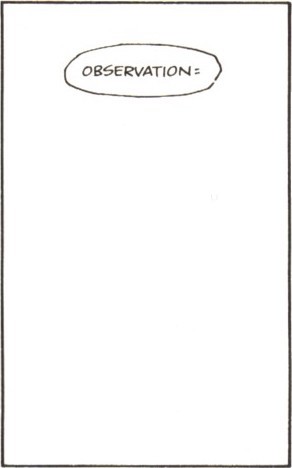 Quick update on Christine's Patreon. There's been a tremendous response, but she's stalled at around $208 at the time I'm writing this on Saturday. Financial security for her really needs about $300, so if you're at all interested in her amazing Kate Bush work, please check it out. Also, she's got fun intermediate goals: at $225 she'll be doing a podcast with Daniel Harper, and at $250 another with Jack Graham about Alien and The Shining. So please, help my daughter afford an apartment via her Patreon.
Quick update on Christine's Patreon. There's been a tremendous response, but she's stalled at around $208 at the time I'm writing this on Saturday. Financial security for her really needs about $300, so if you're at all interested in her amazing Kate Bush work, please check it out. Also, she's got fun intermediate goals: at $225 she'll be doing a podcast with Daniel Harper, and at $250 another with Jack Graham about Alien and The Shining. So please, help my daughter afford an apartment via her Patreon.
And so at last the story returns to where it began. Grant Morrison has, of course, been ever-present. As already discussed at length, his first professional credit predated Moore by five months. But he has been a shadow presence in the narrative, lurking at the edges, occasionally contriving to intersect it, waiting for his moment to take the stage in earnest. And now at last he arrives having always been here, and it becomes necessary to trace the story backwards, figuring out who he has been all this time.
This is, of course, a strange moment in which to observe Morrison, as he remains resolutely unspectacular. The work through which he will define himself is still ahead, the earliest plausible instances of it not emerging until two months after Watchmen finishes, his American debut still almost a full year away. At this point his greatest accomplishment is Zoids, where he surely acquitted himself well, but where he no more established himself as an impending major talent than Alan Moore established himself as the man about to revolutionize comics with Skizz or Captain Britain. His career at this point has no V for Vendetta or Marvelman, nor even a Ballad of Halo Jones. To read the future out of this moment is to work in implication, finding patterns in the negative space. Getting it right is more about knowing the answer ahead of time than insight.
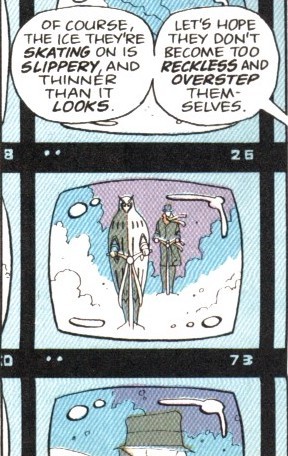 As a result, it is easy to overreach—to confuse historical event and inevitability. On a very basic level, whatever larger conclusions and patterns are inferred, the answer to how Grant Morrison achieved what he did and how he took up his role in the War is simple: he put a lot of work into writing comics that changed the world. This work did not exist in a vacuum; plenty of extremely talented people have worked just has hard to have an insignificant fraction of the insight. Nevertheless, to treat Morrison’s career as some historically deterministic phenomenon that extended out of Alan Moore’s actions would be an egregious error.
As a result, it is easy to overreach—to confuse historical event and inevitability. On a very basic level, whatever larger conclusions and patterns are inferred, the answer to how Grant Morrison achieved what he did and how he took up his role in the War is simple: he put a lot of work into writing comics that changed the world. This work did not exist in a vacuum; plenty of extremely talented people have worked just has hard to have an insignificant fraction of the insight. Nevertheless, to treat Morrison’s career as some historically deterministic phenomenon that extended out of Alan Moore’s actions would be an egregious error.
So too would it be to suggest, as Morrison repeatedly does, that his career could have happened without Moore. Did Morrison come to writing comics on his own? Yes. Did he have his own interests and influences that, while certainly overlapping with Moore, were nevertheless his, interpreted and responded in ways utterly and necessarily unique to him? Yes. But none of that changes the fact that the career Grant Morrison had existed in a large part because Alan Moore did it first. The wave of Karen Berger edited books that started with Animal Man happened because Alan Moore did Swamp Thing. The genre of literate, politically invested superhero comics for adults that Morrison made his name in originated with Marvelman and V for Vendetta. Morrison admits as much, both in 1985 when he acknowledges that “only the advent of Warrior convinced me that writing comics was a worthwhile occupation for a young man” and much later in Supergods when he describes how he and the rest of his generation hit the American superhero scene in the wake of Moore: “And so we arrived in our teens and twenties, in our leather jackets and Chelsea boots, with our crepesoled brothel creepers and skinhead Ben Shermans, metal tattoos, and infected piercings. We brought to bear on the ongoing American superhero discourse the invigorating influence of alternative lifestyles, punk rock, fringe theater, and tight black jeans. We rolled up in anarchist hordes, in rowdy busloads, drinking the bars dry, munching our hosts’ buttocks (artist Glenn Fabry drunkenly assaulted editor Karen Berger’s glutes with his molars), and swearing in a dozen or more baffling regional accents. The Americans expected us to be brilliant punks and, eager to please our masters, we sensitive, artistic boys did our best to live up to our hype.”
The truth is that it was never Moore’s work that Morrison was imitating, but his career. There are similarities in their works, yes, but the truth is that there are even more similarities between Moore’s work and that of Neil Gaiman, whose early DC comics are much more faithful in their imitations of Swamp Thing than Morrison’s. So why is Gaiman the acknowledged protege and Morrison the despised rival? Again, one answer to this question extends out of specific decisions and choices—specific actions Morrison took in crafting his public persona that alienated Moore, and specific decisions both men made in the face of that antipathy. Another answer, however, is more esoteric, extending less out of decisions anybody made than out of the fundamental cultural relationships in play—a necessary consequence of the particular streams of influence and iconography that both men brought to the precise historical moment they did.
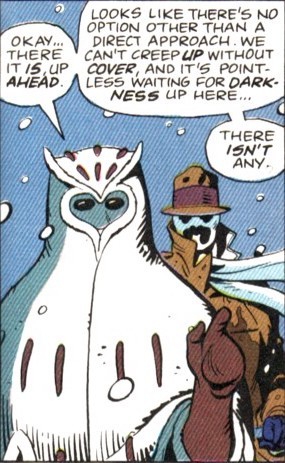

Figure 1140: Grant Morrison's illustration for his article on sword and sorcery comics. (From White Tree #2, 1977)
In this regard, contributing factors. First of all, Morrison was always more straightforwardly rooted in superheroes and genre fiction than Moore. He writes of this love with vivid and tangible passion throughout Supergods, making it clear that superheroes were not merely a genre he enjoyed, but something deep and central to who he was in a way that none of Moore’s comments on childhood love of the genre ever suggested. For Morrison, superheroes were an object of almost religious importance, the “Faster, Stronger, Better Idea” that could fight “the Idea of the Bomb that ravaged my dreams.” As he puts it bluntly in Talking With Gods, during a period in which he didn’t go out or do anything, “I really felt like they’d saved my life in a way.” Even his wider interests tended to circle back to this—a 1977 article for the fantasy fanzine White Tree, to which Morrison also contributed the an ongoing serial entitled Armageddon and Red Wine, tackled the genre of sword and sorcery literature through the lens of Marvel’s Conan the Barbarian comics. And indeed, the fact that his 1970s zine work was on fantasy in the general case, in contrast with, say, Alan Moore, who was bouncing around the Northampton Arts Lab dabbling in a broader spectrum of avant garde and performance art.
Even when Morrison, in his account, fell out of love with superhero comics for a couple of years following his disappointment at the 1978 Superman vs. Muhammad Ali (a period, notably, that overlapped precisely with Captain Clyde), his interests stayed broadly in the sci-fi/fantasy niche. Where Moore had roots in the avant garde and the underground comix scene as well, Morrison had more of a singular tap root into the sci-fi/fantasy genre in general, and superheroes in particular. This is not to suggest that Morrison’s roots were comparatively impoverished, although Moore would surely draw that conclusion, nor that Moore’s roots did not also contain deep affection for and knowledge of superheroes. Simply that at the end of the day, Morrison had a loyalty to the specific genre of superhero comics that Moore did not.
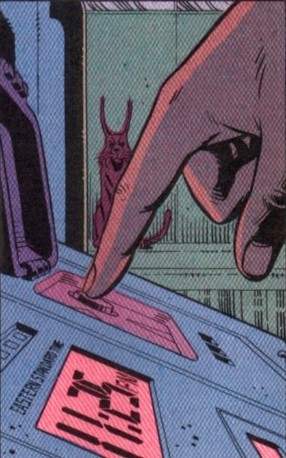
A second factor: Morrison was, from the start of his career, also overtly working with magic. This commenced somewhere around the beginning of 1979 when Morrison’s uncle gave him Frieda Harris and Aleister Crowley’s Tarot deck along with a copy of Crowley’s The Book of Thoth. Intrigued, he sent away for The Lamp of Thoth, a British occult magazine of the 80s. He was quickly drawn to the then emerging chaos magic scene, which had largely been kickstarted by the publication of Peter Carroll’s Liber Null the year before. Describing his first ritual, he recounts performing an “invitation to magic,” asking it to let him in. “I got the candles out, I did the magic words, I did the circle, I did the banishing and all that stuff,” he explains. Laying down after, “there was a kind of gravitational point in the air int he room which was drawing all the perspectives towards it as if there was a hole there or a crack. And there was the sense of black oil filling up the folds between the brain.” Scared, he appealed to Jesus, at which point an angelic lion’s head manifested, proclaiming “I am neither north nor south.”

Figure 1141: Grant Morrison's familiarity with magic was evident as early as Gideon Stargrave. (Written and drawn by Grant Morrison, from "The Vatican Conspiracy" in Near Myths #4, 1979)
Lest one believe that this is post facto justification contrived as part of his rivalry with Alan Moore—an accusation Moore leveled in his incendiary “last” interview, where he claims that “several months after I’d announced my own entry into occultism and the visionary episode which I believed Steve Moore and myself to have experienced in January, 1994, Grant Morrison apparently had his own mystical vision and decided that he too would become a magician”—Morrison’s early career work entirely supports his account of things. The Vatican Conspiracy contains a panel in which someone conducts a ritual to consecrate a circle taken from Reginald Scot’s 1584 The Discoverie of Witchcraft, conducted in what is recognizably a Circle of Solomon as described in The Lesser Key of Solomomn. And his 1983 zine Bombs Away Batman contains a page of book recommendations including the Illuminatus! Trilogy, Michael Talbot’s Mysticism and the New Physics, and Aleister Crowley’s Magick. (“Learn to manipulate reality with Old Uncle Aleister. If you’re sceptical it’s your duty to try it out for yourself.”) It’s not even possible to argue that Moore was instrumental in Morrison’s decision to be open about his occult interests: he talks about it in multiple interviews going as far back as 1988, where he talked to Arkensword about his “forays into the occult, specifically into Chaos Magick, the current that's revolutionised the occult world during the last 6 or 7 years.”
And so all of Morrison’s actions, from his juvenilia through to his calculated and efficient post-Moore assault on the now crumbling gates of the mainstream comics industry, It is true that Morrison’s conception of magic differs from Moore’s; he’s less focused on art as the specific vehicle for magic and more focused on the traditional notion of directly affecting reality—Morrison and his friend Gordon Goudie both recall Morrison magically locating Goudie’s missing guitar in the early 80s. That is not to say that Morrison’s art is not at times overtly magical—he’s been unambiguous about viewing The Invisibles that way—but it means that he does not necessarily view every Zoids script and every Future Shock as a magical spell in the same way that Moore would eventually come to. Nevertheless, he was magically aware, and was viewing the world in a magical way for more than a decade before Moore did.
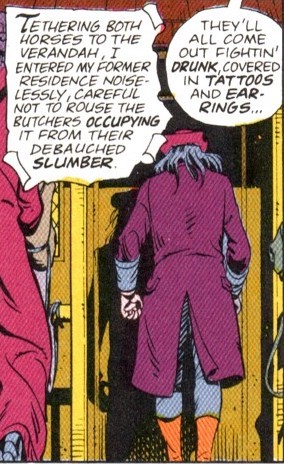

Figure 1142: Polly Styrene of X-Ry Spex converting Grant Morrison to punkhood on Top of the Pops.
Third: he was a punk. Morrison has told the story of becoming a punk in multiple ways; in a 1988 one-pager called “Born Again Punk” for Heartbreak Hotel he said that “1977 was almost a religious thing—a conversion I suppose,” but in Supergods he dates it to 1978, saying that he’d initially dismissed punk “as some kind of Nazi thing after seeing a photograph of Sid Vicious sporting a swastika armband,” only coming around when seeing X-Ray Spex perform “The Day The World Turned Day-Glo” on Top of the Pops in 1978. In either account, however, the vigor of his newfound passion is clear. Writing in Supergods, he explains that “the world started to make sense for the first time since Mosspark Primary. New and glorious constellations aligned in my inner firmament. I felt born again.”
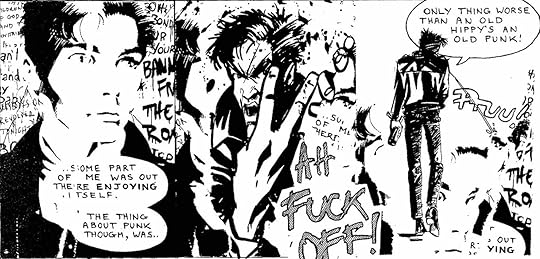
Figure 1143: Grant Morrison being punk. (Written and drawn by Grant Morrison, from "Born Again Punk" in Heartbreak Hotel #4, 1988)
Morrison was, however, a curious sort of punk. As he admits in “Born Again Punk,” he did not actually dress the part, wryly joking, “I know people who claim to have seen me with spiky hair, a leather jacket and drainies in 1978… maybe while I sat in my bedroom, listening to Peel and ‘Streetsounds’.” And this is backed up—a common refrain of anybody telling early 80s Grant Morrison stories is the extent to which he was a shy and awkward sort of geek. This is not, of course, incompatible with being a punk, but it reflects a sort of aspirational relationship with the brash disruptiveness of punk—one captured in Supergods when he describes how “this, for me, was the real punk, the genuine anticool, and I felt empowered. The losers, the rejected, and the formerly voiceless were being offered an opportunity to show what they could do to enliven a stagnant culture. History was on our side, and I had nothing to lise. I was eighteen and still hadn’t kissed a girl, but perhaps I had potential. I knew I had a lot to say, and punk threw me the lifeline of a creed and a vocabulary—a soundtrack to my mission as a comic artist, a rough validation.”
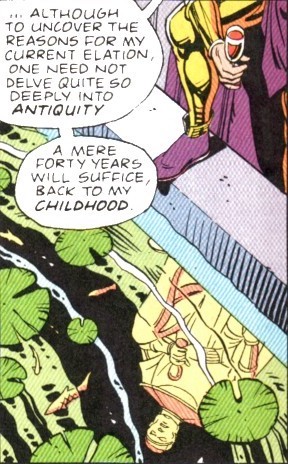 These factors in mind, turn to how he got to this point. His upbringing as the child of an antinuclear activist has come up before, but it’s worth pausing to look more at his father, who was an extraordinary figure in his own right. Walter Morrison volunteered for the army in World War II out of a hatred of fascism, but quickly came to find that, as he put it, “So I go into the military thinking we’ve got a crusading crowd of people here, who are even more aware than the civilian – that he’s prepared to get a gun and go and fight for that guy. And then to find in that situation that this guy knows less about freedom than what I’d come from, and what I’d been taught. And that everything I had been taught about the baddie, the Nazi and the fascists was plonk there in front of me, in this crowd of people who were supposed to be enlightened, informed and geared up to fight it. So how the hell do you move from that square to the enemy? When you find the enemy’s in your midst?”
These factors in mind, turn to how he got to this point. His upbringing as the child of an antinuclear activist has come up before, but it’s worth pausing to look more at his father, who was an extraordinary figure in his own right. Walter Morrison volunteered for the army in World War II out of a hatred of fascism, but quickly came to find that, as he put it, “So I go into the military thinking we’ve got a crusading crowd of people here, who are even more aware than the civilian – that he’s prepared to get a gun and go and fight for that guy. And then to find in that situation that this guy knows less about freedom than what I’d come from, and what I’d been taught. And that everything I had been taught about the baddie, the Nazi and the fascists was plonk there in front of me, in this crowd of people who were supposed to be enlightened, informed and geared up to fight it. So how the hell do you move from that square to the enemy? When you find the enemy’s in your midst?”
As one might expect from this, Walter Morrison had a difficult time in the army. In one of his most entertaining anecdotes, King George VI came to inspect his unit, and asked him how he liked the Army. As he tells it, “Without much hesitation I told him I didnae like it.” In another instance, after being sent to India, he was informed that his unit would be facing women and child protesters, and given the order to shoot the protesters if they advanced; his response was that he would be the first to open fire, first shooting any soldier that turned his gun on a woman or child and then shooting the officer who gave the order. The result was one of his several stints in the Glasshouse.

Figure 1144: Walter Morrison protesting.
After the war, Morrison retired to a life of activism. The bomb was his most frequent target, but he was an unrepentant radical, pacifist, and anarcho-socialist. On one instance, after his friend Stuart Christie was arrested in Spain for trying to assassinate Franco, Morrison went to picket the Spanish embassy, where he was promptly arrested and subjected to a lengthy interrogation over his political affiliations. (Christie also largely corroborates Grant Morrison’s story of his father being threatened by men in black, although Christie sets the incident at a protest near the pier at which the nuclear submarines were serviced as opposed to a nighttime visit to the home.)
The influence Morrison’s father upon him is clear enough in his sense of radicalism and the iconoclastic. But their relationship was complicated; it was through his father’s activism that Morrison’s deep fear of the bomb arose, after all. And when he describes his parents’ divorce in Supergods the sense of blame is clear: “Dad’s marital betrayals were more than Mum could handle. Like the cvracked vases that she chucked in the bin for any sign of imperfection, Dad was irreparably fractured. He’d always dug the broken pieces out of the trash and painstakingly Scotch-taped them back together, but in his case the damage was irreversible.”
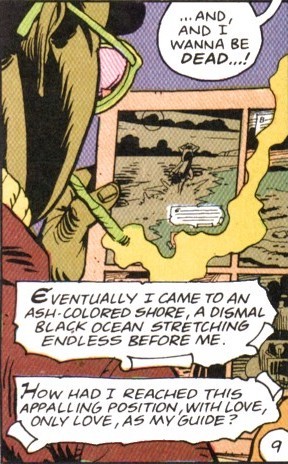
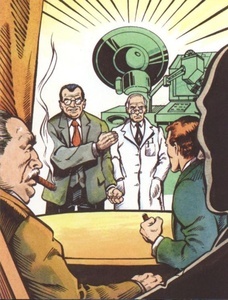
Figure 1145: Barry Kitson's illustrations for "Osgood Peabody's Big Green Dream Machine" (From Superman Annual 1986, 1985)
In decades to come, Morrison would mine his sense of confusion and pain over the divorce for his Batman run. All of this, however, lay far in the future; in his early career, his only opportunity on the character came in the UK 1986 Batman Annual, in which he published a three-page illustrated prose story alongside one in the equivalent Superman Annual. In this he was once again following in the footsteps of Moore, who’d published a similar diptych the previous year. These pieces are, to be sure, mediocre—particularly the Batman one, entitled “The Stalking,” which is a bland piece about Catwoman breaking into the Batcave marred by a clumsiness of prose. The Superman piece, “Osgood Peabody’s Big Green Dream Machine,” is better, with a sense of endearing absurdity—at one point Peabody, who has invented a machine that can see into people’s dreams and proposes to use it to find Superman’s weakness, is asked whether he sleeps in his labcoat, and offendedly insists that of course he does, and the story ends with the reveal that everyone has actually been looking at Krypto’s dreams, and that the frequent images of bones were not, in fact, symbols of Superman’s underlying fear of death. It’s witty, but clearly juvenile—the work of a writer at the beginning of his career. (Moore, meanwhile, published "For The Man Who Has Everything" the same month.)
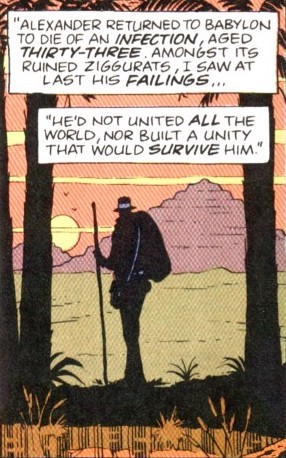 That this would still be true in 1985 when Morrison’s career had begun in 1978 is striking. By 1985 Moore was a titan. Not yet thirty-three, he’d hit it big at DC after revolutionizing the British comics industry, and was preparing to write the work that would end the Cold War. Morrison, meanwhile, had not meaningfully advanced from the upstart teenager who’d landed a comic in Near Myths seven years previous. That magazine had folded, he’d been sacked from the Govan Press, and his comics career consisted of a few Starblazer comics knocked off for spare cash. His career floundered, looking like it would be over in a flash, unnoticed by essentially everyone. And then, in 1985, he returned to the industry to try again. What had happened in the meantime?
That this would still be true in 1985 when Morrison’s career had begun in 1978 is striking. By 1985 Moore was a titan. Not yet thirty-three, he’d hit it big at DC after revolutionizing the British comics industry, and was preparing to write the work that would end the Cold War. Morrison, meanwhile, had not meaningfully advanced from the upstart teenager who’d landed a comic in Near Myths seven years previous. That magazine had folded, he’d been sacked from the Govan Press, and his comics career consisted of a few Starblazer comics knocked off for spare cash. His career floundered, looking like it would be over in a flash, unnoticed by essentially everyone. And then, in 1985, he returned to the industry to try again. What had happened in the meantime?
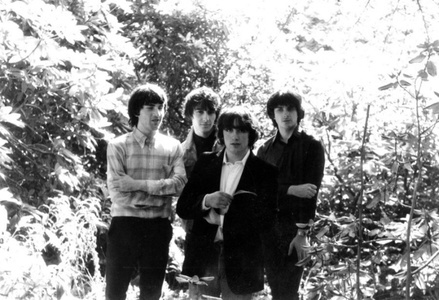
Figure 1146: Band photo of Grant Morrison and the mixers.
For the most part, Morrison tried to become a rock star. The main vehicle for this was the Mixers, a band spearheaded by Dannie Vallely and Ulric Kennedy in which Morrison played rhythm guitar. The band, named for a throwoaway line in A Clockwork Orange, split the difference between Morrison’s newfound punk interests and the 60s mod aesthetic Morrison was otherwise drawn to—“the Hollies on speed,” as one review apparently described them. Morrison’s account of the band is modest—as he puts it, “We weren’t great musicians, but we had a lot of enthusiasm. The trouble is, everyone was coming from a similar place of damage. We weren’t very good at being a band… we were a kind of crappy band, but we looked beautiful and we sounded really great.”
Given that virtually all that survives of the band are CD-Rs of their 1984 album Speed, Madness, Flying Saucers, which was in turn copied from a cassette tape, Morrison’s boast of quality is difficult to evaluate. Comparing the Mixers straightforwardly to contemporaneous bands like the Smiths or Echo and the Bunnymen runs aground against the fact that those bands had professional studio recordings The Smiths eponymous first album cost six thousand pounds and involved ditching the entire first studio session and starting over; even the handful of Mixers tracks to emerge on CD-released compilations are clearly hastily produced efforts by a bunch of kids on the dole.

Figure 1147: Grant Morrison in full dandy attire.
Nevertheless, even the most charitable reading of the Mixers would conclude that they were simply the wrong band for the time. Morrison cultivated a flamboyantly retro mod aesthetic, dressing much like Gideon Stargrave eventually would in The Invisibles—his first real effort at the ostentatious public personality he sought—but in doing so he just missed the New Romantic scene. Similarly, the band’s 60s retro sound might have fit well in glam, which was fundamentally a classic rock revivalism with more flamboyance, but again, was far too late to catch this wave. Instead, as pop music made the swing towards the postpunk influenced second British invasion, the Mixers attempted to jump ahead straight to Britpop and fell into the decade-wide chasm between them, never to be seen again.
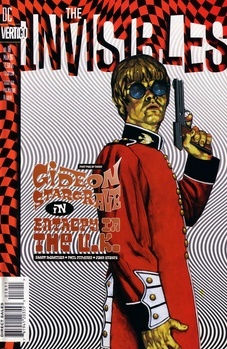
Figure 1148: Gideon Stargrave dressed in an outfit directly lifted from Morrison's own past. (Art by Sean Phillips)
But while the Mixers may not have been successful musically, they provided an important stepping stone between the nineteen year-old Morrison—a shy geek drawing comics—and the persona he would eventually craft for himself. As mentioned, his Mixers-era persona was a flamboyant mod—outlandish and brightly colored jackets—Frank Quitely describes it as “dandyish in a kind of very skinny Oscar Wilde kind of way.” As he put it, “I formed a band, and just started to live, and get out, and dress up and be the person I’d always wanted to be.” He’d hang around Glasgow, a “mod shaman” going to pubs like the Rock Garden and reading Tarot for anyone seeking advice.
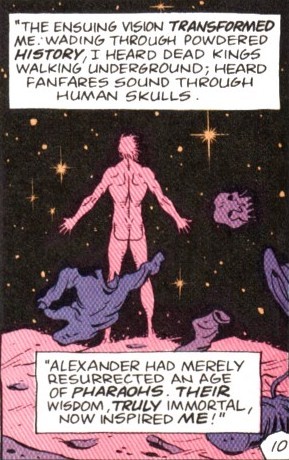 The band as a whole cultivated a similarly brash attitude. In Bombs Away Batman, Morrison cheekily presents an interview with the band in which they affect a posture of brash arrogance. At one point, Morrison proclaims “the charts are full of dross. I don’t believe there are more than a handful of bands on the whole planet who really care about what’s going on and want to change it. And the so-called ‘subversive’ bands like Crass wouldn’t know subversion if they fell over it, that’s why they never achieve anything.” But the ambition for overall fame was clear—at one point, discussing their hatred of how the musical landscape had fragmented into endless subcultures, Ulric Kennedy proclaims that “we just want there to be a mainstream so everyone likes us.” Within the braggadocio, however, Morrison repeatedly outs himself as someone with more intellectual goals—at one point he muses about how “in all the magazines it’s ‘fun fassions of the ‘50s’ and all the crap. And everyone’s falling for it. It shows you how easy it is to rope the kids in on a general shift towards a puritanical right wing value system—Thatcher and Reagan trying to create the old world again.” Or, at one point, the genuinely amazing exchange in which Morrison and the interviewer, who is, recall, Morrison proceed to finish each other’s sentences in the course of a lengthy reverie on Von Neumann, quantum physics, and the UK music press.
The band as a whole cultivated a similarly brash attitude. In Bombs Away Batman, Morrison cheekily presents an interview with the band in which they affect a posture of brash arrogance. At one point, Morrison proclaims “the charts are full of dross. I don’t believe there are more than a handful of bands on the whole planet who really care about what’s going on and want to change it. And the so-called ‘subversive’ bands like Crass wouldn’t know subversion if they fell over it, that’s why they never achieve anything.” But the ambition for overall fame was clear—at one point, discussing their hatred of how the musical landscape had fragmented into endless subcultures, Ulric Kennedy proclaims that “we just want there to be a mainstream so everyone likes us.” Within the braggadocio, however, Morrison repeatedly outs himself as someone with more intellectual goals—at one point he muses about how “in all the magazines it’s ‘fun fassions of the ‘50s’ and all the crap. And everyone’s falling for it. It shows you how easy it is to rope the kids in on a general shift towards a puritanical right wing value system—Thatcher and Reagan trying to create the old world again.” Or, at one point, the genuinely amazing exchange in which Morrison and the interviewer, who is, recall, Morrison proceed to finish each other’s sentences in the course of a lengthy reverie on Von Neumann, quantum physics, and the UK music press.
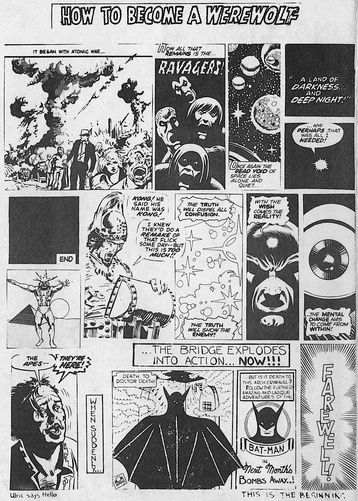
Figure 1149: Cut-Up Comics (Arranged by Grant Morrison, from Bombs Away Batman, 1983)
The ambitious arrogance of this interview is of a piece with Bombs Away Batman, which is probably the best single encapsulation of Morrison’s early 80s obsessions. In addition to a punk collage aesthetic, Morrison finds time to offer book recommendations (in addition to those already mentioned, A Clockwork Orange, High Windows by Philip Larkin, Red Shift by Alan Garner [who he interviewed for an issue of White Tree a half-decade earlier], The Stand, Richmal Crompton’s Wlliam books, Charles Berlitz’s Doomsday 1999, and, inevitably, the Jerry Cornelius books), a page on comics that consists purely of praise for Alan Moore (who “has singlehandedly lifted comics into a realm only partly glimpsed by previous writers,” although even here Morrison can’t resist complaining that he’s unimpressed with the “Warpsmiths” strip), a page of poetry that ends with the encouragement to send in “more of these great poems, especially one about God, the army, and nuclear war. If you can’t write them yourselves try looking through old school magazines or poetry fanzines and copy the best ones—participate!”, and a cutup comic entitled “How to Become a Werewolf.” It’s everything one wants from a young Grant Morrison—a burst of snarky, presumptuous, and intellectualized DIY punk.
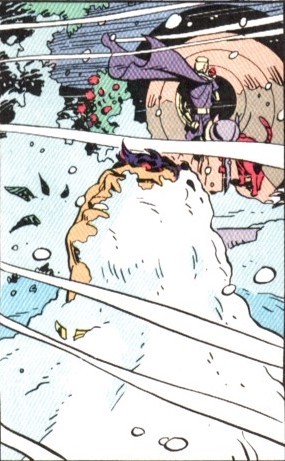 The only thing it isn’t, unfortunately, is very much like the Mixers, whose retro songs about the trials and tribulations of love feel nothing like the iconoclastic “I’ll fight the whole damn world” zeal of their rhythm guitarist’s fanzine. And so it is perhaps unsurprising that the band steadily sputtered to a halt. As Morrison tells it, they were “spinning in multicolored circles, devolving to nothing more than posters, threats, and endless vague rehearsals.” Until eventually they’d stopped. Various combinations would try a few side projects over the next few years—the Favues, Ochre 5, and Jenny & The Cat Club, all with basically the same sound, but none left any mark, and by 1985 Morrison’s music career was dead and buried.
The only thing it isn’t, unfortunately, is very much like the Mixers, whose retro songs about the trials and tribulations of love feel nothing like the iconoclastic “I’ll fight the whole damn world” zeal of their rhythm guitarist’s fanzine. And so it is perhaps unsurprising that the band steadily sputtered to a halt. As Morrison tells it, they were “spinning in multicolored circles, devolving to nothing more than posters, threats, and endless vague rehearsals.” Until eventually they’d stopped. Various combinations would try a few side projects over the next few years—the Favues, Ochre 5, and Jenny & The Cat Club, all with basically the same sound, but none left any mark, and by 1985 Morrison’s music career was dead and buried.
And so Morrison retreated back to comics. This was a slow process, to be sure. He started with “The Liberators” in Warrior, where he had the misfortune of arriving precisely as the magazine folded in February of 1985. A few months later he landed “The Stalking” and “Osgood Peabody’s Big Green Dream Machine,” and at the start of 1986 landed another text piece in Captain Britain and his first Future Shock in 2000 AD. Along the way, he also tried to reactivate various older projects—Gideon Stargrave made a two-page reappearance in the Food for Thought anthology, which also featured the Alan Moore/Bryan Talbot collaboration “Cold Snap” and an extremely early work of Warren Ellis’s from long before he was famous enough to get away with sexually abusing dozens of women. And, of course, he did the series of Zoids strips for Marvel UK, his first work to really catch eyes and turn heads.
Success breeds success, and Morrison soon found other work at Marvel UK. In June of 1987, the same month that Watchmen and Moore’s Swamp Thing run wrapped, Morrison penned a short five-page piece entitled “Meditations in Red” for Action Force Weekly. This mostly served as an introduction to Marvel’s Shang-Chi to set up a run of Master of Kung Fu reprints that would begin the next week, and is basically an infodump with no narrative ideas of Morrison’s own. But what this lacks in cleverness it makes up for in a sort of professional efficiency. Morrison is given a resolutely unglamorous job to do, and he does it. It’s not a job that can be done spectacularly—this is leading into reprints, after all, not some brand new Morrison-penned take on Shang-Chi where he can dramatically recontextualize his origin. But he does it well, clearly, and with at least a few moments of wit.
[image error]
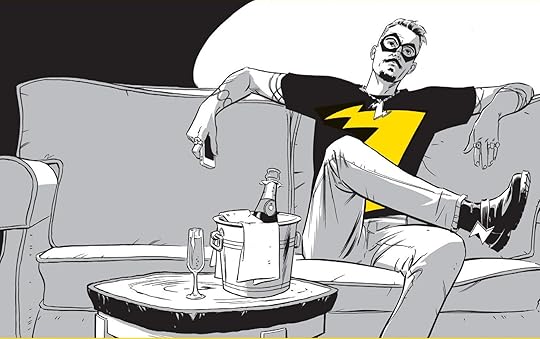
Figure 1170: Steve Yeowell draws Zenith in middle age for "Permission To Land" (In 2000 AD Prog 2050, 2017)
Continuing their assertion of ownership over the character, in 2017, as part of their “Jumping On” issue Prog 2050 running all-new storylines, 2000 AD ran a one-page text story entitled “Permission to Land” by editor Matt Smith, with a single piece of new art from Steve Yeowell illustrating a present-day Zenith. Framed as an in-universe interview with the now fifty year old pop star. He’s promoting a new album, called Chimera, Peter St. John is apparently deceased and with a posthumous memoir that reveals some of Zenith’s role in things, but for the most part there’s not much to it—an empty throwaway of a piece that suggests the concept is better left in the past, and, indeed, with its actual writer, than dragged out thirty years on for an anniversary piece.
But this somewhat pathetic afterlife of Zenith does little to diminish its stature within its historical moment, or even how well most of the original four Phases hold up. As a first major work for Grant Morrison, they show the creator he would be: endlessly innovative, unrepentantly brash, and utterly unintimidated. Does his response to Watchmen equal the original? Of course not. No responses to Watchmen equal it; it’s Watchmen, after all. But what Morrison did accomplish—taking to the pages of one of the magazines Moore had come up via and writing a post-Watchmen comic that offered a fundamentally new take on the genre—is staggering in its magnitude. In one stroke, Morrison declared himself a major talent. Now all that remained was for him to make his move on the US market.}
The Last War in Albion Volume 2 will conclude on August 3rd.
July 19, 2020
Breathing

Breathing
MV
Comic Relief (’86)
My Patreon is doing tremendously well, having gotten over the $200 threshold thanks to my amazing backers. This is a huge deal for me. It means being able to survive off work that doesn't interfere with my disabilities and allows me to focus on my writing. I can't thank y'all enough. Yet nothing is quite nailed down - $300 is the point where I'll be able to comfortably live off Patreon income until my seasonal job resumes, and the page has stalled at $206. So here's some fun: at $225, I'll cut a podcast with Daniel Harper (yes! the guy from "I Don't Speak German!"), and at $250, Jack (the other IDSG guy!) will cut a podcast on "Alien" and "The Shining." You don't want to miss out on that now, do you? Of course not. Feel free to back, or at least share my work. Every bit helps. Thanks so much.
*********************
“Outside gets inside, through her skin
I’ve been out before, but this time it’s much safer in.”
A refugee of fire and radiation self-sequesters in the only shelter it knows. It’s safe in here, it lies to itself, seeking the consolation of its comforting abode. Mother, where are the angels? I’m scared of the changes. Mother is silent, smothered by the asphyxiating light in the night sky. The being responds accordingly, attempting to preserve itself the only way it can: breathing, inhaling every last respirable substance in its vicinity. There are two possible trajectories: out and in, a cyclical dichotomy of breath its hope for life relies upon. Yet its perambulation towards personhood is mutable and futile. If the being is inducted into humanity, its christening into personhood will be a hydrodynamic baptism by fire. It is the first and the last, the honored and the scorned — its story begins where it ends. This is how Kate Bush imparts the awful truth: the world will end, now, and we will hear every syllable of its last, desperate cries for clemency.
What energy did Kate Bush put into her best song? “Breathing” was her “little symphony,” as Bush diminutively but proudly deemed it. Wrought over three tormented days at the tail end of Never for Ever’s Abbey Road sessions, “Breathing” had a rigorous parturiency. On some days, Bush worked for 20 hours, sometimes stopping to rest (often failing) or get high (keyboardist Max Middleton notes this seemed to relax Bush, rather than helping with any creative breakthroughs). More energy was spent on the sessions than Bush’s, however — far from accepting her band playing instruments like craftsmen, Bush was a spiritual taskmaster, making her session musicians play the song again and again until they “felt it.” Eventually it became a ritual, almost a spiritual transformation, which shaped “Breathing” accordingly. Even poor Brian Bath, who claims that Bush drove him to record his guitar part “about 200 times,” admits that “the song had changed, there was this extra thing happening in it.” Max Middleton insisted on amending his Fender Rhode part for each take, trying to make every performance more unnerving than the last. The result is a work that’s ritualistic in its power — a prayer to the eschaton, a voice greater than that of any one musician. Bush remarked something to that effect years later, referring to “Breathing” as one of her first “spiritual songs… rather than the song being my creation, I was a vehicle for something that was coming through me.”
A title like “Breathing” is canny for such a work. It can be adduced from Bush’s willingness to do what the song needed, almost without autonomy, that for 3 days in 1980, music became a possessive force in her life. Breathing emblemizes the act of being a living receptacle for something greater than yourself. It is a transient act by which an organism becomes a vessel for something that doesn’t belong to them, but vitally benefits it. The relationship of an animal and oxygen is commensal — oxygen doesn’t benefit from the animal’s presence, but the animal dies if it stops breathing for too long. Breath, air, oxygen — none of which are the same thing, but can be ascribed to a phenomena that nurtures life — inhabit us until our bodies break down and we no longer need it. It is a companion, almost a deity in its ubiquitously stealthy efficacy. No servitude, but a healthy reliance on something greater.
“Breathing” is the most unified and conceptually coherent work of Kate Bush’s career. Each aspect of its composition and production strives in a single accord. Its mastering of the techniques it uses can be found as much in its broad strokes as its fine details. Bush’s songwriting makes a huge leap in quality, achieving a new standard. It is one of the greatest British singles of the early 1980s, and its reasonable chart standing (#16 in the UK) is as baffling as it is delightful. Without “Breathing,” there is no The Dreaming or Hounds of Love or Aerial. There are two major discernable eras in Bush’s career: before “Breathing,” and its aftermath.
As a conventional and sane member of society, Bush achieves creative apotheosis through a fetus’s perspective of nuclear fallout. Again, that’s not hyperbole — that is actually what the song is about, if not straightforwardly. “Breathing” contains astounding clarity, with its premise explicitly stated through lyrics such as “outside/gets inside/through her skin,” “last night in the sky/such a bright light,” and “breathing my mother in.” It’s rather clear what’s going on: a fetus (probably human, but easily headcanoned out of specieshood) knows that a nuclear bomb has exploded and is experiencing the slow irradiation of its mother’s body with horror. Its fears are expressed in primal terms. It hasn’t gone to school. Nobody has told it what happened to Hiroshima and Nagasaki. All it perceives is a bright light that destroys everything that even its mother can’t protect it from. Bodies are destroyed — the emotional reality takes over, and no rational mind will help.
On a technical level, “Breathing” is Bush’s magnum opus. Her mastery of her own voice is as impressive as the achievements of The Dreaming and Hounds of Love. Throughout the first verse, she sounds as if she’s holding her breath (“out-SIIIIIDE” sounds like shallow inhalation), crooning in a way that’s both innocent and haunting. The two refrains largely follow the first verse’s lead, while the second one sees Bush push her range upwards, making “we’ve lost our chance” a guttural invocation. By the song’s coda, she’s outright screaming at the top of her lungs for breath. Melodically and rhythmically, “Breathing” is on similarly breathy wavelengths. It’s in Eb minor, excepting a few detours into Eb major: the verse commences with the i chord (Eb minor), joins an augmented fifth to it (B) to create a VI chord, and then inverts the i chord with its parallel major (a favorite technique of hers — see also “The Infant Kiss”). The verse ultimately comes out largely to i-VI-I-iv-I (with some tricky slash-chord articulates of E flat major). Rhythm is consistent throughout the verse, with shifting time signatures of 2/4, 4/4, and 3/4 changing by the measure, at a pace consistent with breathing. The refrain is almost entirely in common time, excepting its final measure (2/4). The refrain’s breathing is done by its chord progression (i-III-VI), rising and falling, like an agonized chest not quite inhaling enough oxygen to keep living. Sonically, there are echoes of earlier rock songs: the bridge sounds like Bowie’s similarly cosmic “Space Oddity” in places, and a mechanical hum in the second verse evokes memories of Pink Floyd’s luddite threnody “Welcome to the Machine.”
If your reaction to this isn’t “hey, Kate, who’s your dealer?”, you are a liar and you should be ashamed of yourself. But as we aren’t in East Wickham’s social circle of 1980 and thus lack access to whatever strain Bush smoked at the time, we can interrogate more pertinent issues of why the fuck Bush is using this perspective to explore nuclear war. Since the emotional state of fetuses is pertinent to some deluded members of society, we should probably address that particular discourse. If “Breathing” were released right about now, the pro-life crowd wouldn’t latch onto it (it’s much too weird for a group of people who are busy mutilating their eardrums with MercyMe), but one could see its subject matter being twisted for reactionary ends. The song does cope with fetal autonomy, or lack thereof, but it’s incredibly abstract and fails to resemble abortion in any way (the metaphor would be weird, too: “hey Del, you know what abortion reminds me of? The fucking H-bomb!”). Furthermore, abortion, while still a major topic of conversation in the UK, where abortion was only legalized in Northern Ireland in 2019, is a fundamentally different conversation than it is in the United States. Bush was clandestine about her thoughts on abortion, although one can deduce through an interview where she opines “that life is something that should be respected and honored even in a few hours of its conception” that her private opinions on the matter are on the reactionary side. But that’s not the subject of the song. The issue goes deeper than that — to the dredges of consciousness, the origins of human life, and the human mind’s need for survival.
Like a breath, the fetus in “Breathing” inhabits its mother (although unlike breath, it needs its emissary to survive). While it doesn’t treat a fetus like a parasite, the sheer weirdness of having a burgeoning organism inside one’s body receives emphasis (before you ask, Kate Bush did see Alien. More on that in “Get Out of My House” in August). Rather, the fetus emblematizes the earliest vestiges of human form — hints of consciousness, a complete unfamiliarity with the world. Certainly Bush’s fetus isn’t human, and perhaps only semi-corporeal — “I’ve been out before/but this time it’s much safer in” infers extraordinary capabilities beyond what we’d expect from a human fetus. Contemporary quotes from Bush support this reading: “it’s more of a spiritual being… it has all its senses, and it knows what’s going on outside of the mother’s womb.” A clairvoyant specter, one could say. What a weird epistemology.
“Breathing” contains the body horror of crass jingoism’s mutation of human life. “Breathing my mother in” summates what fetuses do normally while warping it into a desperate gasp for breath. A fetus contains nascent vestiges of human form — we all have to start somewhere. But we have to end somewhere too. “Breathing” offers no hope for survival. Its coda is a macabre apocalypse — Middleton’s dolefully frightened keyboard and Bath’s grimacing, sustained guitar licks underscore predator Roy Harper’s calls of “what are we going to do without?” as Bush’s gasps of "LEAVE ME SOMETHING TO BREATHE!" tear the world asunder. Earlier, the second verse is similarly pessimistic about the possibility that “we’ve lost our chance/we’re the first and last.” This is where it starts and where it ends — the bomb destroys bodies and ends the possibility of life.
It’s worth questioning how nuclear fallout was perceived in 1980’s Britain. According to a contemporary United Nations report, in 1980 there were about 40,000 nuclear warheads in existence worldwide, a quantity that can be academically described as “a fuck-ton” (by comparison, today’s global warhead count of 13,890 is parsimonious). The United States and Soviet Union’s passive-aggressive arm-wrestle of proxy wars for global hegemony was as heated as ever. Nuclear tensions were pretty high, and this was before Chernobyl, the Falklands War, the Strategic Defense Initiative, or the Iran-Contra Scandal. It was also a primarily American-Soviet affair, albeit with other nations drawn in as well. As a close ally of the United States, the United Kingdom had a non-insignificant chance of being targeted for nuclear playtime. This of course led to some painful discourse which is terrifically summed up in a BBC Panorama documentary called “If the Bomb Drops.” Bush talked about watching a documentary about nuclear bombs at the time, while leaving it frustratingly unnamed, but the timing suggests that she saw the Panorama program. The film blends sensationalist exaggeration and callous understatement — one figure pops up to discuss why protecting British civilians from nuclear war is too expensive to be worthwhile, and someone else suggests that “bands of marauders” will wander a once-British wasteland. Throughout its 53 minutes of weird nationalism (stemming the tide of nuclear fallout is important because the UK needs to retain its national identity rather than save lives, apparently), something is just fundamentally off. The idea of the world’s superpowers destroying the planet in a dick-waving exercise is fundamentally terrifying and absurd. Yet only the absurdity shines through, as one refined gentleman estimates a relatively limited nuclear holocaust casualty count (echoing George C. Scott in Stanley Kubrick’s classic Cold War comedy film Dr. Strangelove: “Mr. President, I’m not saying we wouldn’t get our hair mussed, but I do say no more than 10 to 20 million killed, tops!”).
Panorama seems to view nuclear holocaust as a bloodless, anti-nationalist threat without human cost. “Breathing” treats nuclear apocalypse as animistic, stripped of human infrastructure and broken down by the horror of an all-consuming light. There’s even a possible nod to Panorama in the bridge, a slow, diaphanous cacophony of unintelligible sounds pervaded by a subdued, buried report on nuclear war (probably Jay Bush again), clinically and without alarm reporting on the devastation of the bomb.
Sensationalism often takes over conversations about nuclear war. Human casualties are often excused or minimized in the name of military power. Even without taking long-term deaths into account (not to mention cultural trauma), the explosion and firestorm of Little Boy alone are estimated to have killed between 70,000 and 80,000 people in Hiroshima. And that’s not accounting for the immediate deaths in the bombing of Nagasaki, which has a far broader but still ghastly casualty count of 22,000 to 75,000. The victims weren’t merely blown apart either or shot either — they were incinerated, burned alive, hardly recognizable as recently living people. This is the greatest body horror ever wrought by humanity. And nuclear warheads’ harm to people isn’t limited to civilians in wartime either. The United Kingdom gave countless British soldiers cancer, infertility, and children with birth defects in its postwar nuclear tests. Far from being a national security interest, this is fundamentally a weapon that changes the makeup of human biology.
Throughout the years, Bush has sung about the power and vitality of the body. It’s perhaps her most crucial theme: the body is the most beautiful organism we encounter and should be preserved. “Breathing” is fully in line with this idea, and yet it’s a radical departure because the body doesn’t win. It’s turned against itself and destroyed. Never for Ever ends on a note of nihilism.
Where do we go from here? Bush’s dream (of Orgonon?) has been corrupted and will never be the same. The Dreaming reels from the trauma of “Breathing.” The body keeps fighting, but the soul has been weakened. Emotions are less straightforwardly positive than they used to be. But they’re also crucial: “Breathing” is pervaded by emotional reality as well as bodily pain. A scary light in the sky is scary because of its emotional reality.
Bush claimed that the political content of “Army Dreamers” and “Breathing” only served to “move [her] emotionally.” Characteristically, Bush is both wrong and insightful here. The idea that songs are less political because you’re emotionally invested in the political issues they discuss is utter nonsense. But… of course political issues are emotional. Bush even acknowledges this in the next part of the quote, saying “it went through the emotional center… when I thought ‘ah, ow!’ And that made me write.”
Perhaps nothing is more political than personal emotions. Emotions are always present in a person’s values, decisions, choices, and aesthetics. Human beings are ventilation devices for emotions. Perhaps without realizing it, the entity that moved Bush is the radical politics of emotion in the service of bodily liberation. Emotions are political. Everything is political, as no man is an island. And crucially, breathing, and who gets to do it, is political.
Recorded in March 1980 at Abbey Road. Released as a single on 14 April 1980, then as the closing track of Never for Ever on 7 September that year. A censored version of the music video was aired on Top of the Pops on April 14. Performed live by Bush (solo) at a Comic Relief concert in 1986. Personnel: Kate Bush — vocals, piano, production. Stuart Elliott — drums. Jon Kelly — production, engineering. Max Middleton — Fender Rhodes. Alan Murphy, Brian Bath — electric guitar. Larry Fast — Prophet. Morris Pert — percussion. Roy Harper — backing vocals. Image: Hiroshima immediately after the dropping of "Little Boy" (photographer unnamed).
July 15, 2020
Creeping Fascism and the Long Depression
A Sketch.
*
Fascism in Italy and Germany in the 1930 was a distal result of the Great Depression. This vast crisis in capital accumulation and flow led not only to immense suffering among the working class but also to a devastation of the middle class. This both stimulated the growth of a fascist mass movement (which always have their base in the middle classes) and created a political deadlock in normal democratic government. This deadlock was so paralysing that powerful sectors of the ruling capitalist class - notably those in heavy industry, which stood to benefit directly from fascist government’s state programs and war preparation - were persuaded to relinquish the fig-leaf of democracy altogether. Fascism is many things but it is always a desperate attempt on the part of a crisis-ridden capitalist system to overcome paralysing contradictions born of crises caused by its own economic laws of motion.
The last big crash, commonly dated to 2008, led to what the Marxist economist Michael Roberts has called ‘the Long Depression’. This refers to the inability of Western capitalism since 2008 to make a full recovery. Beset by insufficient and stagating profit rates, and unmanageable build-ups of debt (fictitious capital, itself an attempt to compensate for insufficient profitability), capitalism has limped along waiting for an even bigger crisis which will eventually restore profitability (at least enough) by wiping out huge amounts of capital. (This, by the way, confirms Marx’s analysis of capitalism as subject to an inherent tendency for the rate of profit to fall owing to increasing investment in fixed over variable capital (i.e. machinery, tech, etc over labour), thus lowering the amount of value produced by the system, it being abstract socially necessary human labour time that is the objective substance of value.) It is this ‘Long Depression’ which has ultimately been the economic basis of what Neil Faulkner and co-authors have called ‘creeping fascism’. Faced with a slow-motion crisis in the economic base, the capitalist superstructure has been subject to a slow-motion political crisis. An ongoing crisis of capital accumulation has birthed a gradual crisis in the legitimacy and functioning of liberal democracy. The markers are all too well known, the most seismic in the West being Brexit and Trump.
Some Marxists have been predicting this new crisis for some time, not least because of the continued failure of the system to restore profit rates and the continued build up of debt. The same underlying conditions in place, and very little in the way of political or economic reform (of, say, the financial sector) having been achieved, the next crisis was imminent. Few expected it would be as vast as the one just in the process of starting to hit, but then few predicted a global pandemic that would force global capitalism to essentially put capital accumulation on pause for months. (It is worth remembering that, far from being a random unlucky happenstance, coronavirus itself is almost certainly a byproduct of capitalism’s abuse of the environment. It is not just profit rates that are unsustainable; it is also the tolerance of nature.)
Much as the Great Depression had a catastrophic effect on the middle-classes and thus spawned fascist movements as a reaction, so the Great Recession and Long Depression of 2008-onwards also entailed huge negative effects (in real terms) for the middle classes, which (arguably) constitute an ever larger and more important sector in hyper-neoliberal capitalist economies like Britain and the United States. This is not because the working class is disappearing - on the contrary, globally it is vaster than ever - but because neoliberal capitalism has scaled back production in developed countries and vastly scaled up financial services and other such white collar jobs while engaging in wholesale proletarianisation in so-called developing economies. In the Marxist view, anybody who has to sell their labour power to a capitalist is a member of the working class, and Marx and Engels spoke of “two great classes… bourgeoisie and proletariat” in The Communist Manifesto. But Marx and Marxists don’t deny the existence of intermediate social layers. Even within the “two great classes”, people stand within all sorts of relations to the means of production and those who own them. Most police officers, for instance, are not independently wealthy and couldn’t afford to not be employed by somebody, yet (hopefully) no Marxist would see police as straightforwardly members of the working class, because their social role is to stand as the guardians of the social order based on the ownership of the means of production by a minority. They don’t spend all their time working directly for big capitalists, or even in a directly repressive capacity for the state. But their essential role is to enforce laws of property which benefit those who have it, and to keep the social order that capitalism needs in order to reproduce itself. They also serve an ideological role in legitimising the existing social order, the supposedly necessary protective role of the capitalist state, etc. Certainly, police - for all their rhetoric about being there to ‘protect and serve’ - generally understand themselves to be in a separate category from the mass of workers or unemployed.
In the same way, the class of small business owners (petty bourgeoisie) don’t quite seem to fit into a simplistic reading of Marx’s theory. They own a small amount of the means of production, they employ people and thus appropriate surplus value by exploiting them, yet they are themselves often dependent upon credit from big capitalist banks, effectively working for the big capitalists via the medium of small business. This, to be clear, separates them from the working class, yet it doesn’t quite align them with the capitalist class - at least it is a partial and uneasy alliance even at the best of times. A shopkeeper has an antagonistic class relationship with their own employees because they exploit those employees in order to make a profit, yet if huge chunks of that profit are them handed over to a major bank which extends them the credit they need in order to operate, they stand in a semi-exploited role in relation to the capitalist ruling class. This becomes clear in moments of capitalist crisis when small businesses are the most likely to go under, have credit withdrawn, be made bankrupt, and be swallowed up by big capitalists more able to absorb economic shocks. This is, in a way, only a fast-motion version of the normal process of competition, which drives small businesses out at the expense of big businesses. Just look at the city centres dying because of out-of-town supermarkets and Amazon. The crisis increases the prevalence and tempo of the process.
Philip Sandifer's Blog
- Philip Sandifer's profile
- 48 followers



